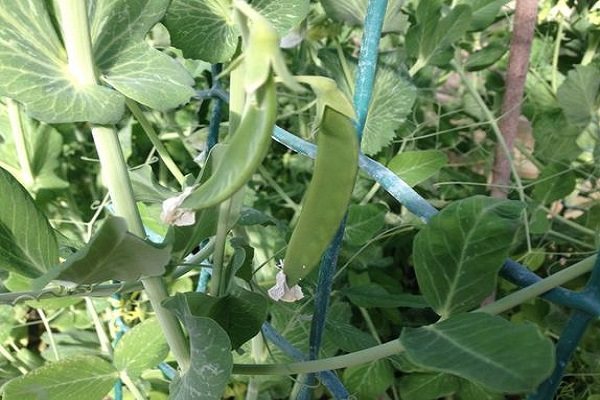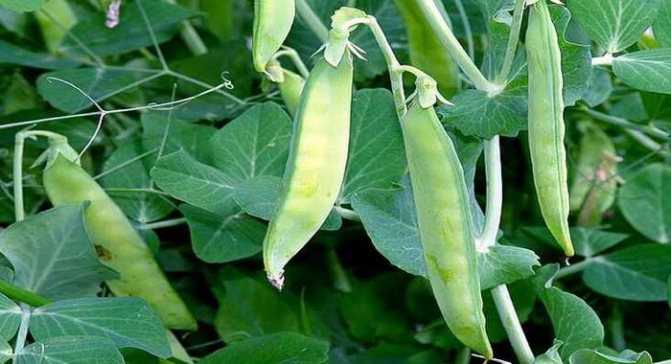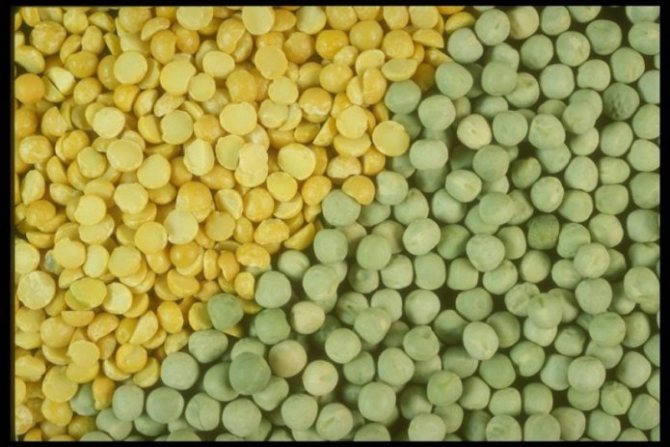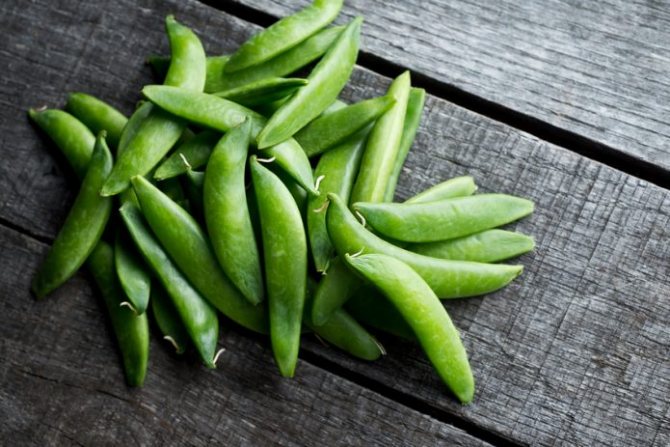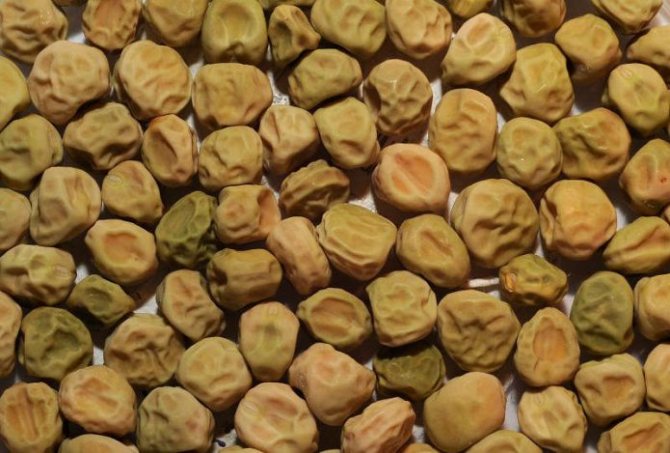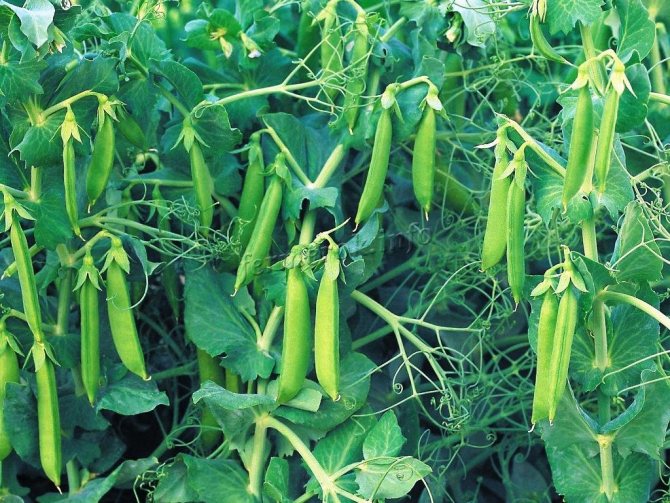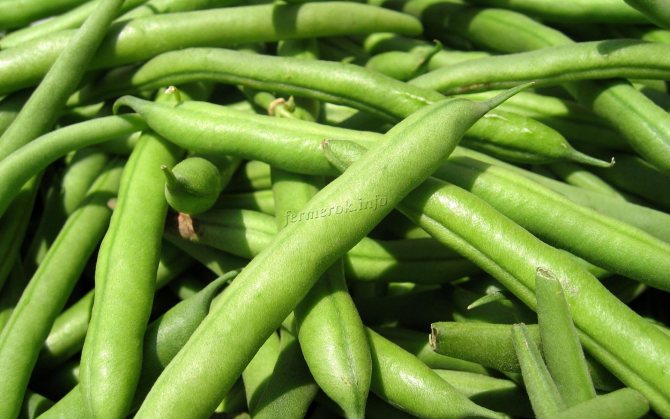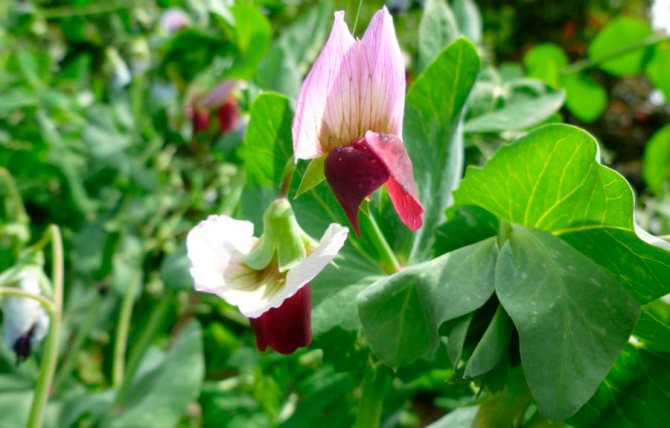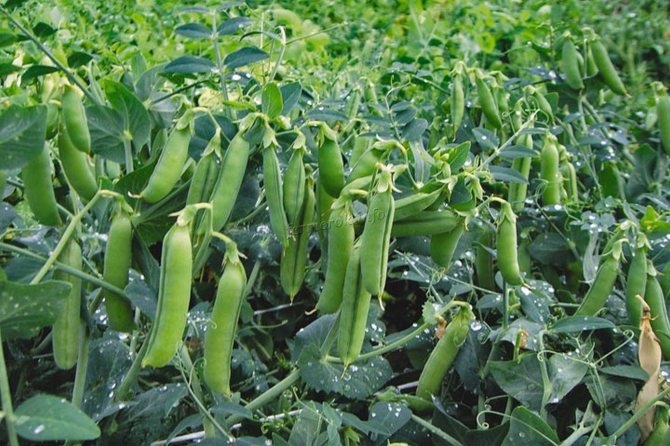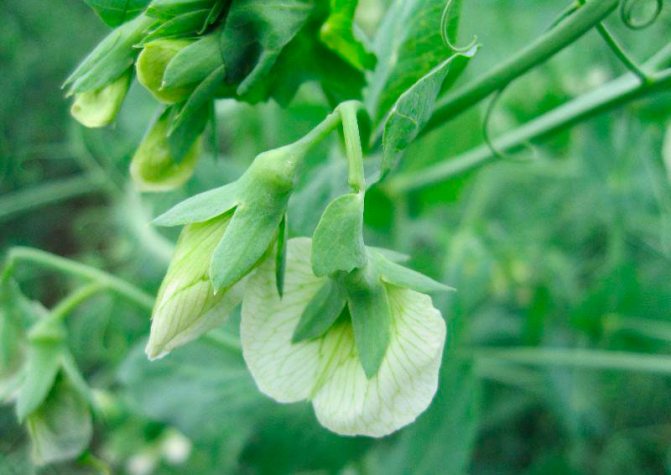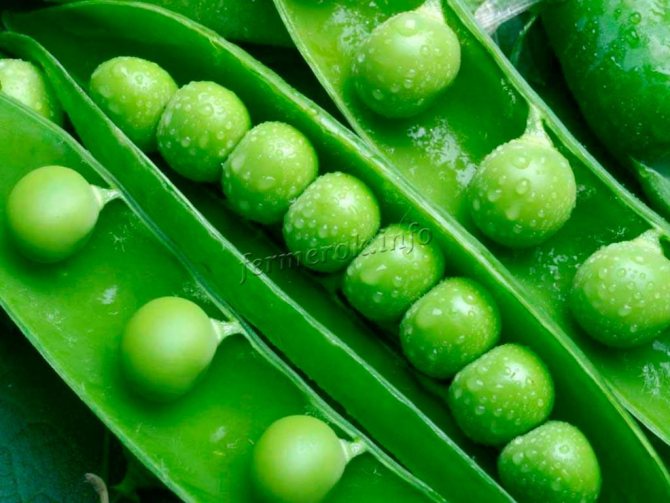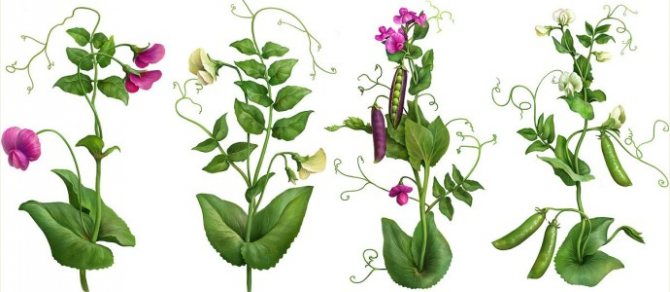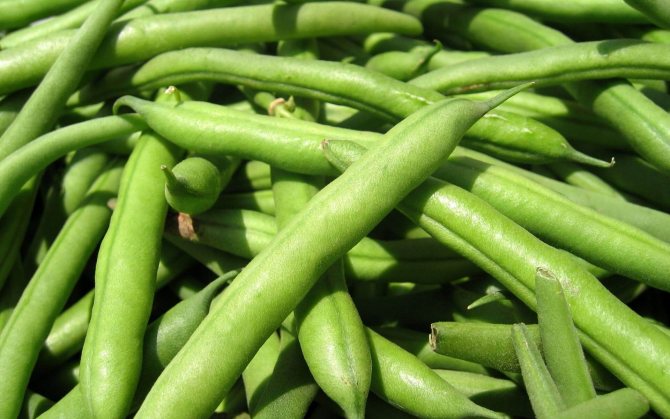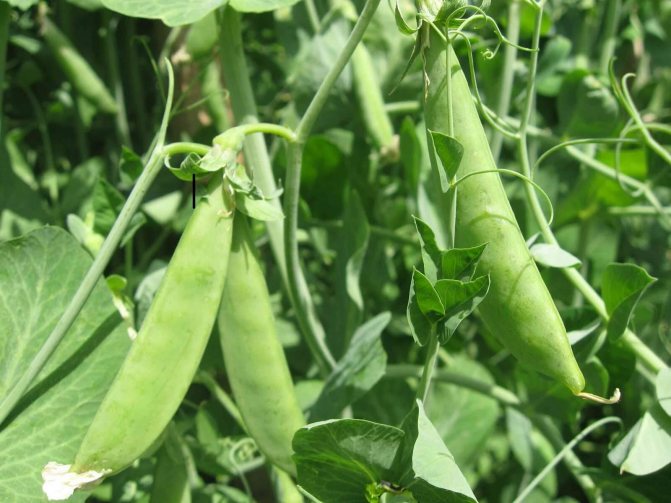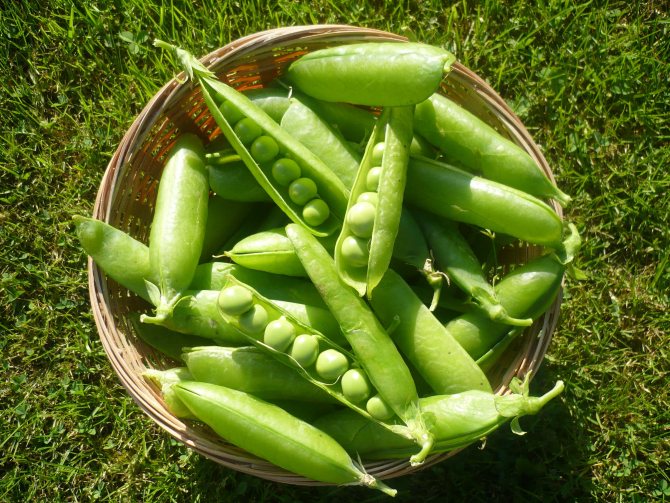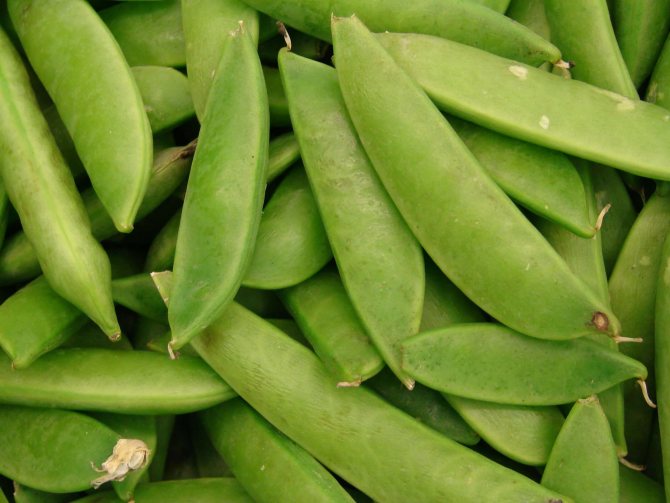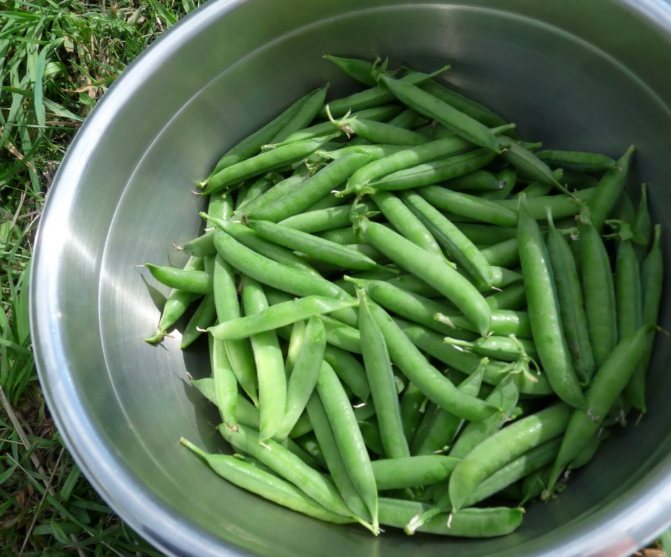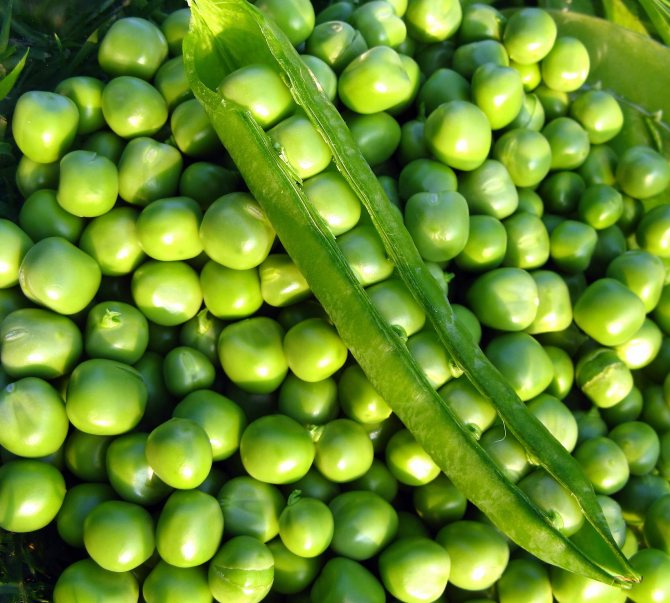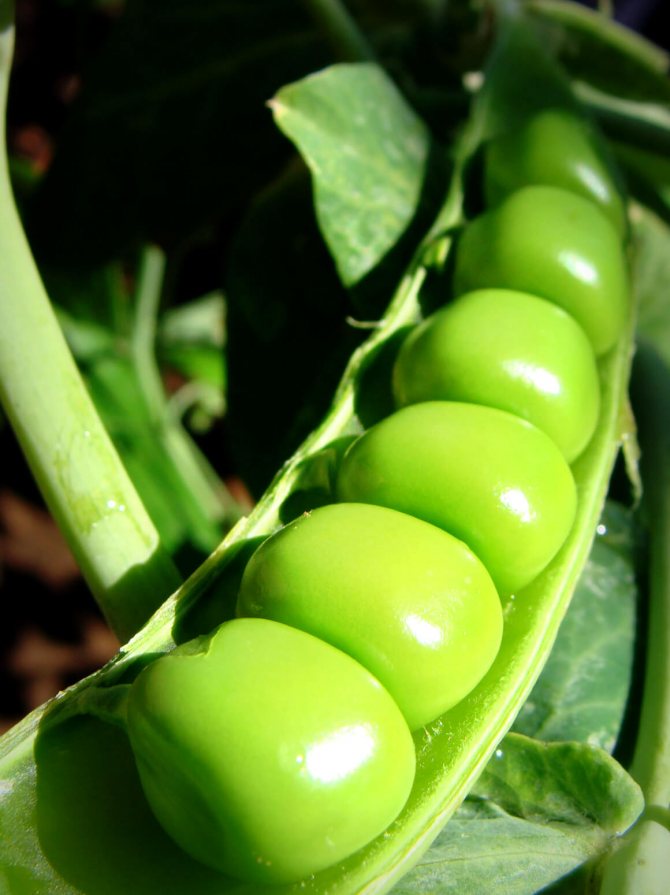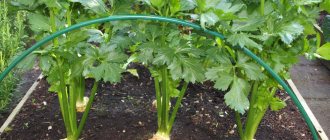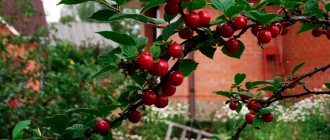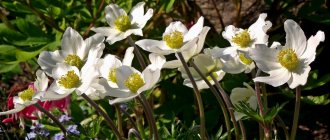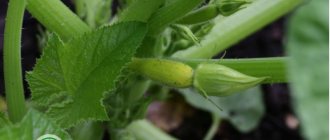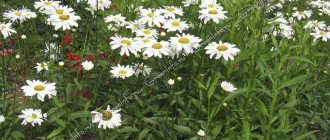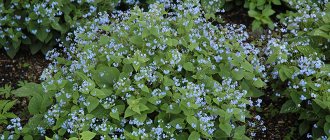The herbaceous plant peas (Pisum) is a member of the legume family. It comes from South-West Asia, where it was cultivated in ancient times. Green peas contain carotene (provitamin A), vitamin C, PP, B vitamins, as well as salts of manganese, phosphorus, potassium and iron. Peas also contain lysine, which is one of the most rare amino acids. Today, 3 varieties of this plant are cultivated, namely: grain peas, fodder and vegetable peas - this annual is self-pollinating and has a rapid development. This culture is popular not only because it is a source of vegetable protein and contains many substances useful for the human body, but also because it is an excellent green manure. Peas are an excellent precursor for all crops grown in the garden without exception.
Classification
The common pea species (Pisum sativum) belongs to the genus Pisum belonging to the Fabaceae (or Viciae) family and is related to the genera of rank (Lathyrus L.) and lentils (Lens Mill.), Vetch (Vicia L.) and Vavilovia Fed. The genus Pisum previously numbered more than 10 species, but now it includes only two: Pisum sativum L. and Pisum fulvum Sm. The rest were transferred to the rank of subspecies or varieties of Pisum sativum, with which they are easily pollinated.
The species Pisum sativum presents a very large genetic diversity, which manifests itself in numerous changes in the morphological characteristics of flowers, leaves, stems, fruits and seeds, which motivated various classifications of forms, intraspécifiques. The main subspecies and varieties are as follows:
This is a purely botanical classification of subspecies. But there is also a classification of varieties depending on the direction of their use.
- Shelling peas (Pisum sativum L. convar. Sativum), has a smooth surface and during processing it is usually peeled from the skin and only cotyledons remain. They are high in starch and relatively low in free sugars.
- Marrowfat pea (Pisum sativum L. convar. Medullare Alef. Emend. C.O. Lehm) when ripe, shriveled, resembling the brain. But they are brought to this state only in seed production, and they are unripe as a food product. Moreover, unlike the previous variety, they contain quite a lot of sugar, which determines their sweet taste. They are the ones that end up in jars and frozen mixes.
- And finally sugar peas (Pisum sativum L. convar. Axiphium Alef emend. C.O. Lehm). The leaves have no parchment layer and the whole fruit can be used. The seeds are relatively small and very wrinkled due to their high water content.
How it grows commercially
Modern technology makes it possible to quickly plant large areas of peas. Almost all regions grow peas in large quantities. The product is used as canned food and for animal feed in the form of grain preparations.
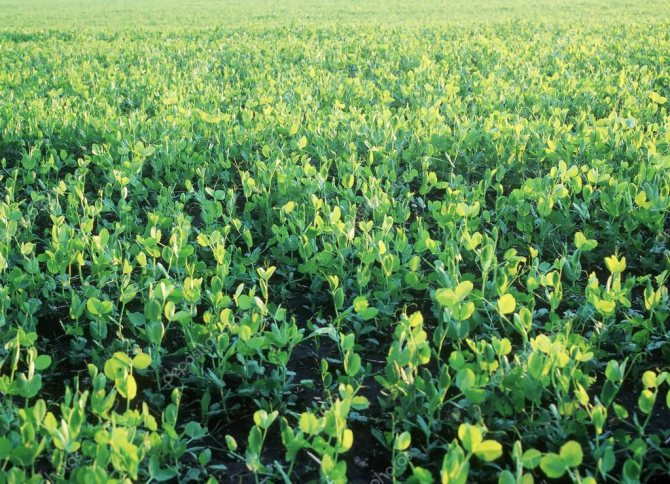
Landing scheme
Fully ripe peas are used for planting. Varieties are planted according to their ripening period. Before planting, the field is plowed and cultivated. Then, with the help of seeders with top sowing, the planting material is planted in the ground.
Harrowing
After the plant sprouts, which will reach 10-15 cm, harrowing is performed. For this, a special mechanized device is used, with the help of which the soil is cultivated between the beds. Harrowing is carried out twice for the entire ripening period.
Watering
During the entire ripening period, the culture is irrigated 3-4 times, irrigation is carried out using special installations that spray water in the required amount.
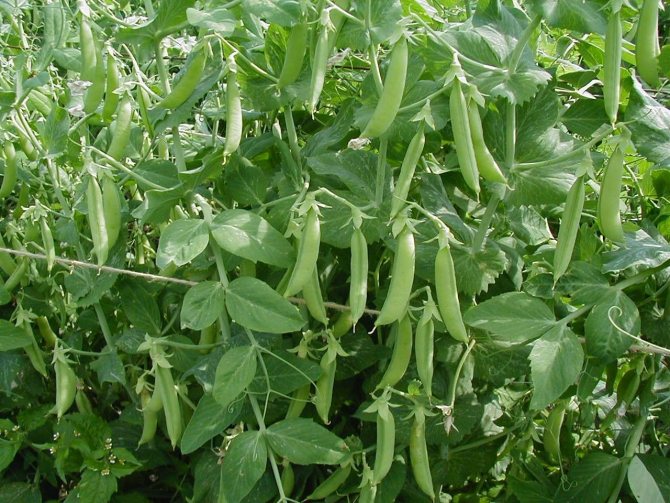

Herbicides
The use of herbicides is carried out before the formation of inflorescences on the plants. Pest or weed herbicides can be used. After the formation of flowers, the plant is not subjected to chemical treatment.
Mechanized harvesting
Several types of harvesting can be used:
- the use of combines that carry out one-time cleaning;
- if the variety has ripened unevenly, initially the peas are mowed and folded into rolls, after which, after a few days, the plant is processed using a combine.
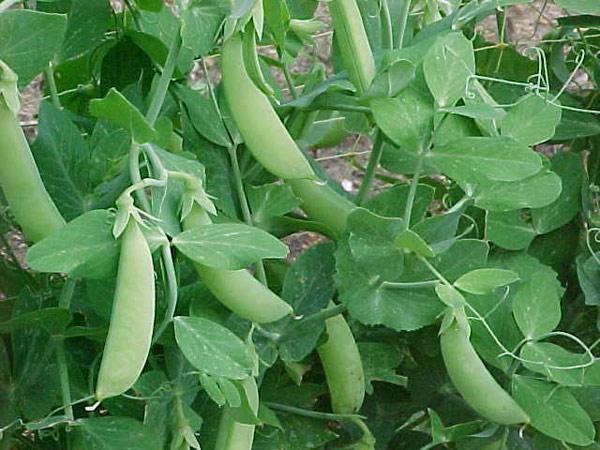

Most often, peas are harvested in mid-July.
Pea properties
The value of peas is primarily due to their high protein content - much more than in other vegetables, and almost as much as in meat, but pea protein is better absorbed. Peas also contain carbohydrates, vitamins A, B, C, minerals and fiber and are therefore a desirable food addition for vegetable or lean diets.
The big role of peas is that they are an excellent green manure, a precursor for planting many cultivated plants. Growing peas, like other legumes, enrich the soil with nitrogen.
general description
In fact, you may not know anything about how to grow peas, but simply sow the remaining piece of land on your site with dry beans. As a result, the plant will delight children with delicious fresh fruits. But in order to obtain high results, it is very important to know the features of agricultural technology. Peas are classified as annual crops. It has a small-thickness stem up to 250 cm long. The structure of the stem is highly dependent on the selected variety. The color is most often light green, but sometimes gray-green is also found. Leaves also leave the stem, and white flowers appear during flowering.
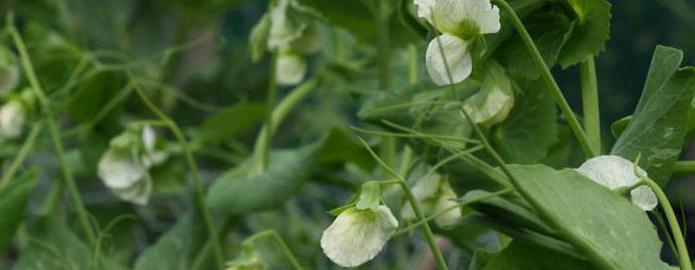

Pea varieties
Peas have earned the respect of breeders for the fact that they are easily amenable to changes and improvements in their qualities and properties. New varieties are constantly being developed to satisfy different requirements, so that no one has a shortage of choice of seeds for sugar peas or shell peas.
Here is a list of the most popular pea varieties among farmers and gardeners:
- Table varieties - suitable for drying and subsequent preparation of side dishes, soups, cereals from them.
- Alexandra- early ripening variety, ripens 50-60 days after germination. A short weaving plant with juicy sweet peas.
- Sunrise - medium late variety with shelling beans. The semi-dwarf plant reaches only 65–75 cm, so it hardly lodges. It is characterized by amicable ripening of beans and disease resistance.
- Canned varieties - suitable for canning fresh "green peas" in cans. Sugar varieties are usually used.
- Viola- high-yielding, undersized, erect, medium ripening (57–62 days) variety. The plant is not tall, 60-80 cm.
- Premium - early ripening variety (55-60 days), gives a good harvest. Plant height up to 80 cm.
- Universal varieties - bred for food use in both ways.
- Vega- a peeling variety with an average height and ripening period (50–70 days). The stem is low, up to 65 cm, resistant to lodging.
- Troika - cerebral, medium-sized, late variety (ripens in 80–90 days). The height of the peas is average - up to 80 cm, the length of the bean is up to 8 cm.
Growing features
Peas have cultivation features that must be taken into account by every gardener.


Ripening terms
Peas can be of different varieties, so the ripening period is different. Early varieties have a ripening period of 45 days from the date of planting. Medium varieties - 55-60 days.Late varieties ripen 65-70 days after planting in the ground.
Site requirements
The site must meet the following requirements:
- be located in a sunny place;
- have moderate acidity;
- keep away from places that accumulate moisture.
Before planting, it is necessary to add nutrients for the rapid development of the peas.


Good neighbors
Choosing the right neighbors not only improves the growth of peas, but also repels pests.
Potatoes and other nightshades
Crops promote the uptake of nitrogen and other nutrients. That has a positive effect on the taste of peas.
Cabbage
The proximity of cabbage with peas has a beneficial effect on the vegetable. Crops have different pests and root systems, so they do not fight for nutrients.


Corn
Corn is considered a good neighbor for peas. This is due primarily to the fact that peas are a climbing plant. The corn acts as a support.
Carrot
The plant contributes to the release of a specific smell. Carrot beds protect the peas from potential pests.
Beet
Growing beets requires a lot of nutrients in the soil. Siderata release the necessary components and increase the yield of beets.
Cucumbers
Peas feel good next to cucumbers. Alternating beds can increase the yield of both crops.


Tomatoes
The specific smell of tomato tops repels flying pests that attack peas. The nitrogen released by peas is consumed by tomatoes, which can reduce the risk of many diseases.
Pumpkin
Growing pumpkin next to peas helps to maintain the required moisture level in the soil.
Soil preparation
For planting peas, the soil must be prepared in the fall. All old leaves and shoots are removed from the site. Humus and potash fertilizers are introduced, the soil is dug up to a depth of 20 cm. This is necessary so that all harmful larvae that hibernate in the soil die under the influence of frost.
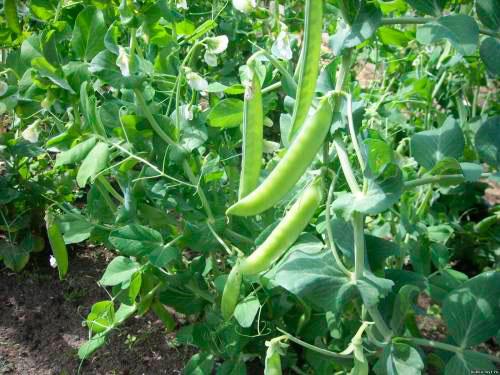

In the spring, the site is loosened, if necessary, fertilized with superphosphate and the culture is planted.
Crop rotation rules
In order to get a high yield, you must follow certain rules:
- planting legumes in one place should be carried out only after 3 years;
- plants in the neighborhood must interact;
- crops that have common pests and diseases are not planted on the same bed;
- the soil requires regular rest, so crops that consume the same nutrients need to be rotated.
Peas are green manure, so they can be used to fertilize depleted areas.
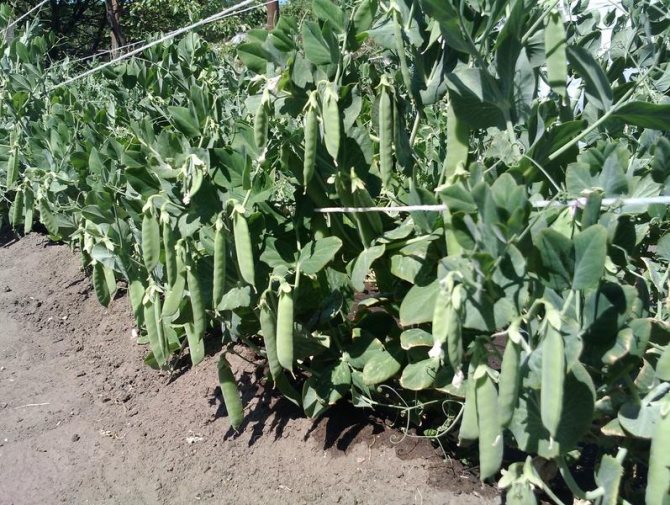

Climatic conditions
Peas like moderate moisture, especially during the flowering period. The plant can tolerate frosts down to -6, however, with prolonged heat, it can reduce yields. The most optimal temperature for the formation of ovaries on peas is + 15 ... + 17 degrees.
Growing peas
An unpretentious plant requires a minimum of effort to grow, but nevertheless, compliance with some requirements will help increase the yield.
Soil and planting dates
Peas grow well on air-permeable fertile soil with normal acidity. If the soil is poor, it is easy to fix it - before the spring planting in the fall, when digging, add 5 kg of compost, 15 g of potassium salt, 30 g of superphosphate per 1 sq. m, and add ash in the spring.
This vegetable loves sun and watering; it is cold-resistant, in central Russia it can be planted at the end of April. To extend the harvest period 2-3 times with a difference of 10 days, a new batch of seeds is planted.
Planting peas
Peas are an excellent precursor for many crops, but it is advisable to plant them after potatoes, pumpkin seeds, tomatoes or cabbage. The peas are soaked in water for 12-17 hours, the water is changed several times.If there are not very many peas, then they can be kept in a damp cloth until the sprouts are pecked. The seeds are sown in damp ground to a depth of 3-4 cm, with a distance of 15 × 5 cm. To protect the peas from birds and frost, you can cover the beds with non-woven material.
In order not to form a crust on the ground, the peas must be loosened in the aisles. In dry weather, during flowering, it should be watered at least 2 times a week.
If the variety of planted peas is tall, then for a good harvest it needs support - high stakes with a wire stretched between them. Low-growing mustachioed varieties grow without support, intertwining with mustaches, they support each other.
Reproduction of peas
Peas are propagated by seeds. To collect seeds (peas), the pods must be left on the bush until the bottom row is fully ripe - this can be determined by the appearance of a whitish mesh on the bean leaves. Pea bushes are cut at the root, tied and hung in a dry place until completely dry for 1-2 weeks. Peas are carefully peeled from dry pods and dried for another week, spreading in one layer. Dried seeds are stored in a paper bag.
As we can see, peas are not a capricious culture, but very healthy and tasty. Allocate a small piece of land to this vegetable and give a little care - and in 2-3 months you will be able to eat tender peas, treat them to your children, and get excellent compost from the remnants of greenery.
Technological map of cultivation of sowing peas
| Procedure | Period | The values | Unit | Parameters |
| Autumn procedure | September | Soil processing depth 25-27 cm | WHOLESALE - 3-5 | Outdoor furniture-701 |
| Harrowing | One week before disembarkation | Reduces the amount of weeds. Carried out in the transverse direction | BMSh-15 | Outdoor furniture-701 |
| Chemical exposure | 5 days before planting seeds | It is used to remove weeds if there is heavy contamination | OPSh-15 | MTZ-80 |
| Fertilization and Cultivation | Carried out 3 days before sowing | Soil impact depth 30 cm | PNB-75 | MTZ-80 |
| Treatment substances for growth | The day before disembarkation | Gibberellin | MTZ-80 | |
| Harrowing | After germination | 15 cm | KON-2.8PM | MTZ-80 |
| Harvesting | Within 3 days | After the ripening of the culture | ZhRB-4.2 |
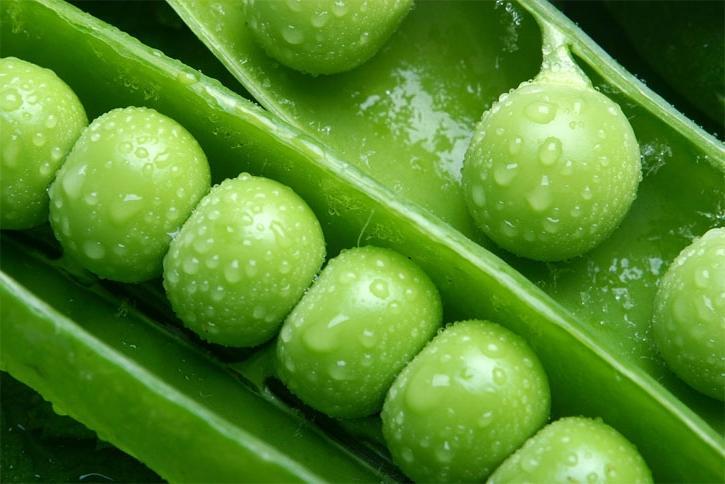

Shelling and sugar varieties of green peas
Belongs to the genus of herbaceous plants of the legume family. The stem of the plant is hollow inside, with many antennae. The stem color ranges from light green to dark green. The plant blooms with not large white flowers, sometimes with a purple tint, female and male, which do not need pollination by bees. The fruits are round in shape, located in several pieces in a pod, have a second name for a pod.
Beans can vary in size, shape and color from one cultivar to another. The seeds in the pod are arranged in a row of 4 to 10 seeds. The surface of the peas can be smooth or wrinkled, the color and shape differ depending on the variety. As a rule, the color of the seed coat can be determined by the color of the flowers of the plant, since they are the same.
The varieties are divided into two main groups: shelling and sugar varieties. A distinctive feature of peeling varieties is the presence of a parchment layer. The parchment layer is located on the inner side of the pod valves, which makes them unsuitable for human consumption. Plants of peeling varieties are grown for canning.
Sugar varieties do not have parchment partitions. It is eaten unripe, whole, not divided into seeds and valves. There is also a semi-sugar variety, which is something in between a shelling and sugar type. The parchment layer in this variety is practically imperceptible, and becomes noticeable only in dried beans.
The varieties can be both low - from 40 cm, and with a long stem - up to 250 cm. They also differ in early maturity. Preferred are the forms with a thickened stem, short internodes, which do not need support.Early varieties are suitable even for the Far North - up to those latitudes where farming is possible.
In early spring, you can sow several varieties at the same time and then eat fresh green peas for 1.5-2 months. If you correctly distribute the sowing time of different varieties throughout the season, you can feast on fruits from the garden for 90-100 days.
The following varieties are best suited for summer cottage cultivation of peas: Avola, Strizh, Pegasus, Vikma, Geneva, Skinado, Violena, Salut, Karina, Chinese, Ilovetsky.
Cleaning and storage of peas
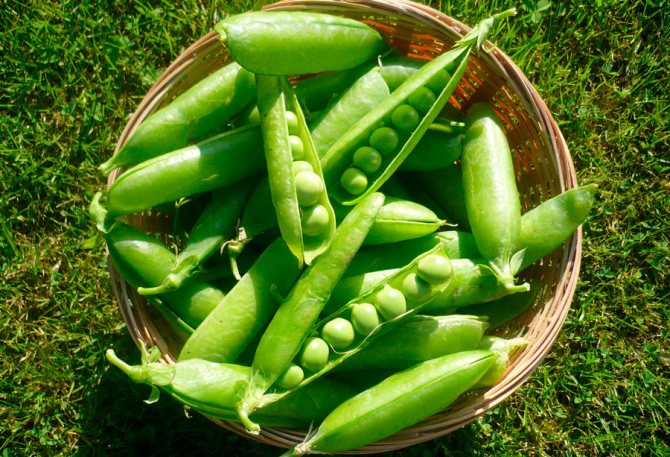

About 30 days after the plant has finished flowering, you can start harvesting. The duration of fruiting of this culture is from 35 to 40 days. Such a plant is multi-harvest, so its fruits are harvested every 2-3 days. Fruits located in the lower part of the bush ripen first. During one season, about 4 kg of fruits can be removed from 1 m2 of the garden, but this is only under favorable conditions.
Most often, gardeners cultivate peeling and sugar varieties of this plant. An important difference between sugar peas and shelling peas is that they do not have a parchment layer in the pods; therefore, young fruits, if desired, can be eaten together with the pod. Harvesting of delicate plant pods of this variety is carried out as technical maturity is reached, starting from the second half of June. In order for the bushes to begin flowering again in August, and they give a second crop, it is necessary to systematically pluck all the pods from the plants to one. Harvesting is carried out very carefully so as not to injure delicate shoots.
The collection of the fruits of the peeling varieties is carried out from the last days of June to autumn as they ripen. Since this variety is grown to obtain green peas, the fruits must be removed while they are still smooth and have a uniform color. Mesh pods can only be used for grain.
Green peas, in fact, are unripe, and experts say that the fruits are at the stage of technical maturity. It cannot be kept fresh for a long time, so it is either frozen or canned. There is another way to preserve the harvested crop. To do this, pour the peas into hot water and let it boil for 2 minutes. Then it is thrown into a colander and rinsed with very cold water. After that, it must be placed in an oven heated to 45 degrees, where it must stay for 10 minutes. The pulled peas need to be cooled at room temperature for 1.5 hours, after which they are again removed to the dryer heated to 60 degrees. Peas, if desired, can be dried in the oven on a baking sheet, but in this case you will need to add sugar. When the peas are ready, they will turn dark green in color, and their surface will become wrinkled. It can be stored for quite a long time. Biologically mature peas can be stored for several years if done correctly:
- fruits must be fully ripe;
- before storing, the peas are thoroughly dried;
- for storage, it is placed in a place where there is no access to insects.
Before storing peas, they should be husked and dried in a well-ventilated room for 2-3 days, while sprinkling them on clean paper sheets. Fabric, paper or plastic bags are not suitable for storing ready-made peas, since insects can easily penetrate into them. Experts recommend using glass jars with metal twist lids for storing peas. The fact is that caps made of nylon will not be able to reliably protect it from pests.
Growing seedlings of sugar peas from seeds (with photo and video)
When grown in the country, peas are considered a finicky plant, but growing it in the country, subject to certain rules, is quite simple.
In heavy and clayey open soils, growing and caring for peas is carried out practically on the surface, in lighter soils, planting occurs deeper.
Before growing peas, the seeds should be carefully sorted out, the spoiled, broken ones should be discarded. The rest must be warmed up and soaked for 5-7 minutes in a solution of boric acid (1 g per 5 l of water). Planting takes place in a swollen but dried form. You can also use growth stimulants.
For growing peas, seedlings are sown in spring, in more or less warmed up soil. The root of the plant goes deep into the ground, and therefore it requires preliminary digging of the soil, preferably in the fall. In the same period, it is better to apply complex fertilizers.
Pay attention to the photo - when growing peas, sowing goes with a certain density (undersized varieties are sown denser, taller varieties are sown less often):
The garden bed is very simple to prepare. First, furrows are made 5-7 cm deep. The distance between them is 50-60 cm. The furrows should be prepared in advance, a few days before planting, and a mixture of compost and ash should be added to them, which is sprinkled with earth from the garden bed.
Sow 15-17 pieces for each meter of the bed - approximately every 6 cm. The crops are sprinkled with earth and lightly tamped to retain moisture. After one to one and a half weeks, you will be able to see the first shoots.
Immediately after sowing, the beds can be covered with foil for several days. After germination, it is advisable to lay a net on the garden bed, cover the greenhouse with a frame, pull the ropes, wire to protect it from birds. When the seedlings are about 2 weeks old, it is advisable to loosen the soil around a little and even huddle the seedlings.
The first feeding when growing sugar peas occurs at the moment when the plants in the garden reach a growth of 8-10 cm.Further, feeding can be applied once every two weeks, but this is not as necessary as watering, which should be done systematically, especially in dry weather. But do not be zealous, because it is undesirable to overflow the plant.
But when the color appears, and the fruits begin to pour, try to provide more constant watering - at the rate of up to one bucket of water per square meter of the garden.
When growing green peas, do not forget about the obligatory garter of the bushes - always before the flowering and development of the beans. It is necessary to install pegs every meter and a half and start horizontal guides made of rope or wire so that the plants do not lie on the ground, do not rot from excessive moisture, are well ventilated and warmed up in the sun.
Already two weeks after flowering, you can taste young fruits. It is worth collecting very carefully, without breaking off half of the bush behind each pod. To maximize yields, harvest during the ripening period every day, picking only the most suitable pods from the bushes. If there are overripe and dried pods on the bushes, they should be removed, as they slow down the growth and development of the young.
The crop is completely harvested from the garden during the period when the lower pods ripen and dry out. Cut plants are hung in bunches in a dry and dark room, where they are kept until fully ripe.
The most dangerous is the stalk or leaf roll. After wintering in the ground, the caterpillars of the pests turn into adult butterflies and lay their eggs on the greenery of the plant, in flowers and leaves. Caterpillars reappear from these eggs, which quickly devour young plants and seriously spoil the harvest.
A video of growing peas will help you better cope with this task:
Planting peas in open ground
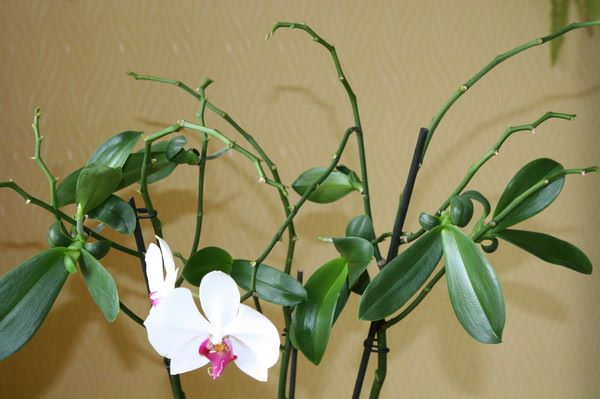

What time to plant
Peas are a rather demanding crop to care for. However, if you adhere to all the agrotechnical rules of this culture, it will be quite simple to grow peas. Sowing seeds in open soil should be carried out in the last days of April (from about the twentieth day), after the snow cover has completely melted and the soil dries out slightly.The seedlings that have appeared grow well and do not die even with a not very large frost. If the variety is early ripening, then the sowing of seeds can be carried out from spring to the end of the first decade of July. Experienced gardeners recommend sowing the seeds of this crop in open soil several times from the last days of April to the first - July, while a distance of 1.5 weeks should be maintained between crops.
Seeds need pre-sowing preparation. To do this, they need to be warmed up for 5 minutes in a hot (about 40 degrees) solution of boric acid; for its preparation, you need to mix 1 bucket of water with 2 grams of acid. As a result, the plant becomes more resistant to harmful insects and diseases, for example, to the nodule weevil larvae. When the seeds swell in the acid solution, they will need to be thoroughly dried. If you suddenly did not manage to wet the seeds before sowing, then they can be sown dry in open ground, after a few hours they will swell right in the soil.
Suitable land
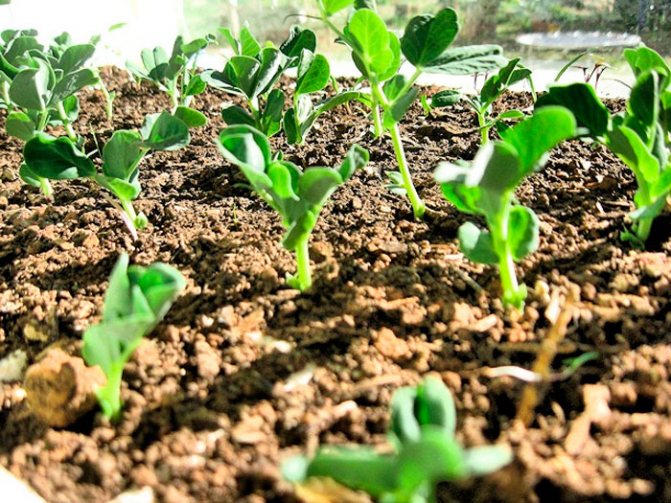

For the cultivation of this crop in open soil to be successful, for this you will need to familiarize yourself with several rules and adhere to them:
- The site must be well lit.
- Groundwater must lie deep enough, otherwise the root system of the bushes, which goes 100 centimeters deep into the soil, can be significantly affected.
- For peas, a light soil rich in nutrients is ideal, with a pH of 6-7. When grown in acidic soil, the bushes will be weakened and sick.
Poor soil is not suitable for growing such a crop, and even one in which there is a large amount of readily available nitrogen. There are gardeners who sow peas directly into the trunk circle of a young apple tree. The crown of a young tree is just beginning to develop, so the sun is enough for the peas. The peas themselves contribute to the enrichment of the soil with nitrogen, which has a very good effect on the growth and development of the apple tree. If you want to resort to this method of growing peas, then a layer of nutrient soil with a thickness of 10 to 12 centimeters must be poured into the tree trunk circle.
Experts advise to prepare the soil for sowing such a culture in advance. To do this, in the autumn, the site must be digged, while 50 to 60 grams of superphosphate and from 20 to 30 grams of potassium salt should be added to the soil per 1 square meter. If the soil on the site is acidic, then this can be corrected by introducing wood ash into it, while per 1 square meter of the site is taken from 0.2 to 0.4 kg, the final amount of ash depends on the value of the acid index. With the onset of the next spring period, saltpeter should be added to the soil (10 grams per 1 square meter of the plot). It must be remembered that this culture reacts extremely negatively to the introduction of fresh manure into the soil, but it grows well on the land that was manured when other plants were grown on it. The best predecessors of such a crop are potatoes, cucumber, tomatoes, cabbage, and pumpkin. And it is not recommended to sow it in those areas where beans, lentils, peas, beans, soybeans and peanuts were grown before it.
Landing rules


Seeds are sown in grooves with a depth of 50 to 70 mm and a width of 15 to 20 centimeters, which must first be done on the garden bed. The distance between the grooves should be equal to 0.5–0.6 m. Mix the compost with wood ash and pour the resulting mixture into the grooves, the resulting layer should be sprinkled on top with garden soil. After that, the depth of the grooves in a bed with heavy soil should remain about 30 mm, and with light soil - about 50 mm. During sowing, 15 to 17 seeds should go per 1 m of the furrow. For this, a distance of approximately 60 mm should be maintained between the seeds.After the grooves are covered with soil, the surface of the garden bed must be thoroughly tamped, which will help retain moisture in it. The bed must be protected from birds that can pull the peas out of the ground. To do this, cover them from above with a fishing net or a transparent film. The first seedlings should appear after 7-10 days. Between the rows on the bed with peas, you can sow lettuce or radish.
Diseases and pests of green peas
To combat diseases and pests of peas, you should take preventive measures in advance. Even in the fall, dig up the site, sow seeds at an earlier time, focusing on the first warm days in mid-spring, and also treat the young plant with infusion of tobacco, burdock roots or celandine leaves. You can also use decoctions of wormwood or tomato tops.
Powdery mildew can also be an unpleasant problem, which affects the entire plant and reduces the chances of harvesting.
You can fight powdery mildew with an infusion of sow thistle (300 g of leaves are insisted in a bucket of clean water for 8-10 hours), with which all plantings are sprayed. Re-spraying occurs a week after the first.
Growing conditions
Sowing peas are very fond of sunny places. The soil should have a neutral pH, while in acidic soil its growth and development slows down. Choose a bright spot. It will be very useful to fertilize before planting. Humus and compost are great. This culture is unpretentious and will calmly accept almost any feeding. In addition to acidified, any soil is suitable. But you need to pay special attention to its composition. If the soil is clayey, heavy, then the seed peas are laid out almost on the surface, without deepening. Light, sandy soil has a different structure. In this case, the seeds should be buried deeper so that the plant has something to hold on to. There are some tricks here that must be taken into account. The plant can scatter whips on the ground, but in this case the planting will take up a lot of space and give a meager harvest. Therefore, it is recommended to definitely install supports for which the plant will cling. Only in this case you can expect a good harvest from him.


Growing peas at home and in a greenhouse
At home, you can grow peas using both seeds and seedlings. It is recommended to start planting seeds in early May, but if these are seedlings, then it should be planted in mid-May. Sugar varieties are very demanding on soil and growing conditions. If a cold snap occurs after sowing, the seeds will begin to decompose. If the soil is not properly fertilized, the peas will have small and narrow fruits. The seeds are placed in boxes that are filled with slightly moistened soil. When growing peas at home, it is recommended to use the soil from under cucumbers and tomatoes.
Before planting seeds, they must be sprayed with nitraginom or boric micronutrient fertilizers. Sowing should be very thick - a few centimeters indent from the row. The embedment depth should be about three centimeters. After that, the crops should be watered with a watering can. If the growth is rather poor, then the soil should be fed with a weak solution of urea. After 3 weeks, the seedlings will be ready for transplanting to a permanent place.
Seedlings can be placed in handy boxes or regular flower pots. On the windowsill, you should choose warm, sunny places. The first watering is recommended after planting the seedlings, the second watering when the plant acquires color, and the last watering when the pea is finished forming.
The cultivation of peas in the greenhouse is carried out for an early harvest. For this, sugar varieties are used. Their beans have no inner hard layer of the valve and can be consumed whole.
Sowing in this case is carried out in February and March in a heated greenhouse at the rate of 120 peas per 1 m². With proper care, this amount can produce a good harvest.
In the greenhouse, the plant is more often than in the open field affected by powdery mildew. You can fight it by ventilating the greenhouse and reducing the humidity of the air. The rest of the cultivation and care is the same as in the open field.
Preparation of planting material
Preparation for growing peas at home begins with the selection of quality seeds. They are the key to a bountiful harvest in the future. You can buy them or assemble them yourself. They retain their germination capacity for two years.
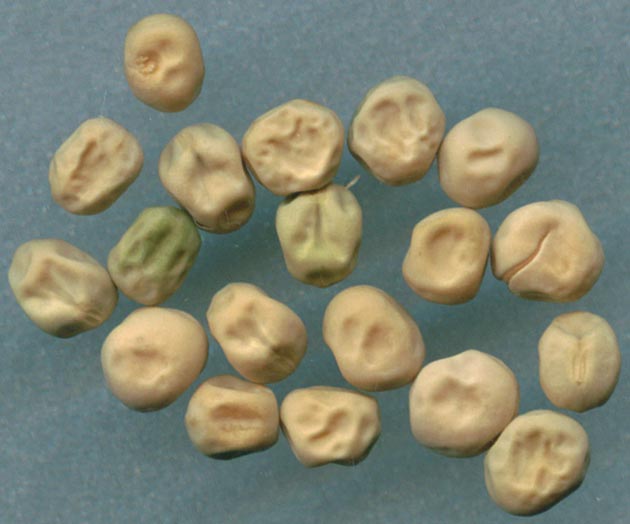

The first stage of the pre-planting preparation of pea seeds - visual inspection
First of all, the peas are sorted out and carefully examined, rejecting those that have obvious defects - violations of the integrity of the skin, other mechanical damage, spots that resemble traces of mold and rot, non-standard sizes and shapes, and so on.
The remaining seeds are immersed in soft water with the addition of table salt (20 g per liter) for 10-15 minutes. If there is no melt or rainwater, a regular water supply will do. But it will have to be defended for at least a day, waiting for a precipitate that resembles grayish-white flakes to form. You can also add a few drops of apple cider vinegar or citric acid crystals. Those peas that float to the surface can be thrown away immediately. Unusual lightness means no embryo. Such seeds will not sprout, this is obvious.
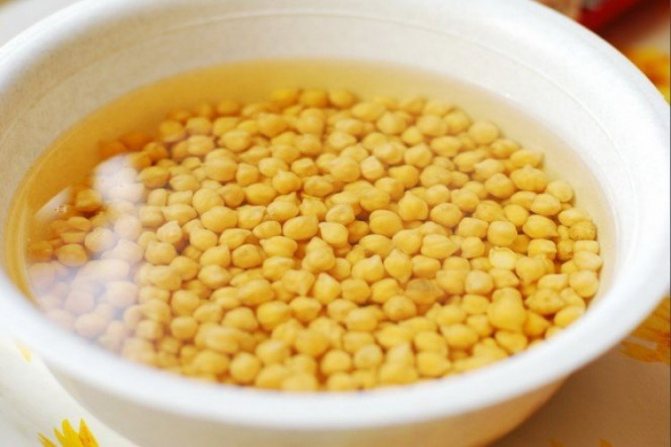

Soaking pea seeds in a saline solution allows you to reject those that clearly will not germinate.
The peas that have passed the test for potential germination are prepared for germination. The grains extracted from the saline solution are washed in running water and let the excess drain off, spreading them out on linen napkins or cotton towels. Then they are soaked in a solution of potassium permanganate of bright crimson color to prevent the development of fungal diseases. Water with the addition of boric acid (0.1 g per 0.5 l) is also suitable. The procedure in the first case lasts 6-8 hours, in the second - 15-20 minutes.
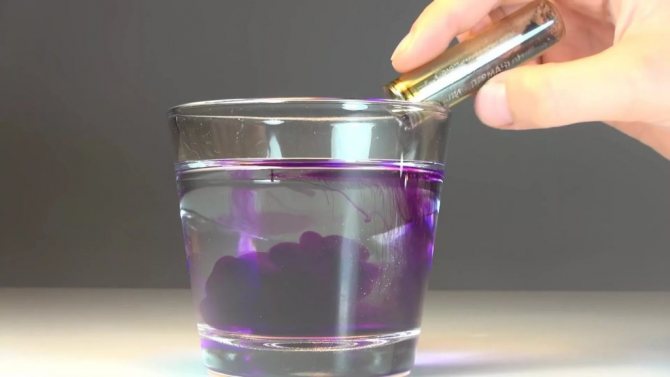

Potassium permanganate solution is one of the most affordable disinfectants
After that, the peas are washed again and kept for 4–6 hours in plain water heated to a temperature of 40–45 ° C. During this time, it is advisable to change it at least once or twice, because it cools down. After a specified period, they are removed from the water and dried.
The final stage of pre-planting preparation is germination. A piece of cotton cloth or cotton wool is moistened with water and squeezed slightly so that it does not drip. To speed up the process, a biostimulant can be added to the water. Both purchased preparations (Epin, Kornevin, Heteroauxin, potassium humate) and folk remedies (aloe juice, honey, succinic acid) are suitable. Seeds are laid out on this fabric and covered with the same piece on top. It is undesirable to use gauze. The emerging seedlings get confused between the threads, it is almost impossible to remove them from there without breaking. And paper napkins very quickly creep into porridge, because the material will have to be constantly moistened as it dries. In no case should you forget about it. If the fabric dries out, the seeds will simply disappear.


If you wrap pea seeds in cheesecloth, sprouted specimens will be very difficult to remove from there without damaging
The resulting "package" is placed on a plate and placed in the warmth. For example, a radiator or a window sill illuminated by the sun for most of the day will do. Seeds are ready for planting, in which the sprout has reached about a centimeter in length. They hatch somewhere in 2-3 days, the whole process takes 5-6 days. Such peas sprout 4–5 days earlier than unprepared ones.
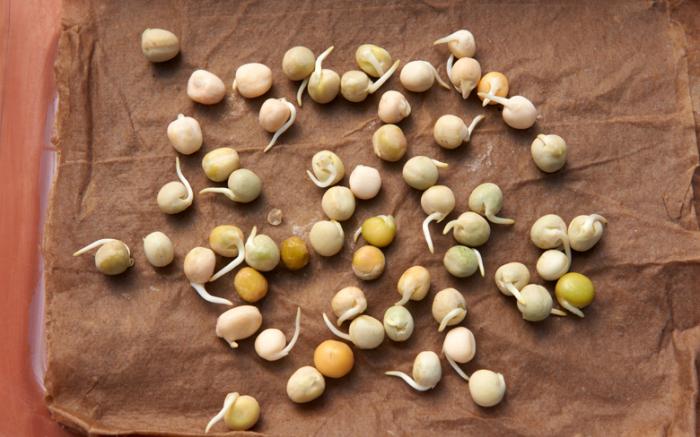

Sprouted pea seeds show faster and better germination rates than untreated ones.
The procedure is carried out in such a way that the seeds can be planted in the ground immediately after it. They don't even need to be dried.
Some gardeners recommend simply pouring warm water over the peas. But in this case, it is easy for those who do not have much experience to spoil the planting material. If bubbles appear on the surface of the water, this means that some of the seeds have died due to a long stay in it. Usually the night is enough, and in the morning the peas can already be planted. They will swell but not germinate. Accordingly, the emergence of seedlings will be delayed.
Video: pre-planting pea seeds
Preparing peas for planting
Before planting seeds, they must be sorted out in order to weed out the spoiled and broken ones. Seeds that are suitable for sowing must first be warmed up. Then soak them in water with boric acid for 5 minutes. When they swell, they can be planted in the ground. Growing peas is not difficult. With proper preparation of seeds for planting, peas, even without growth stimulants, give good shoots.
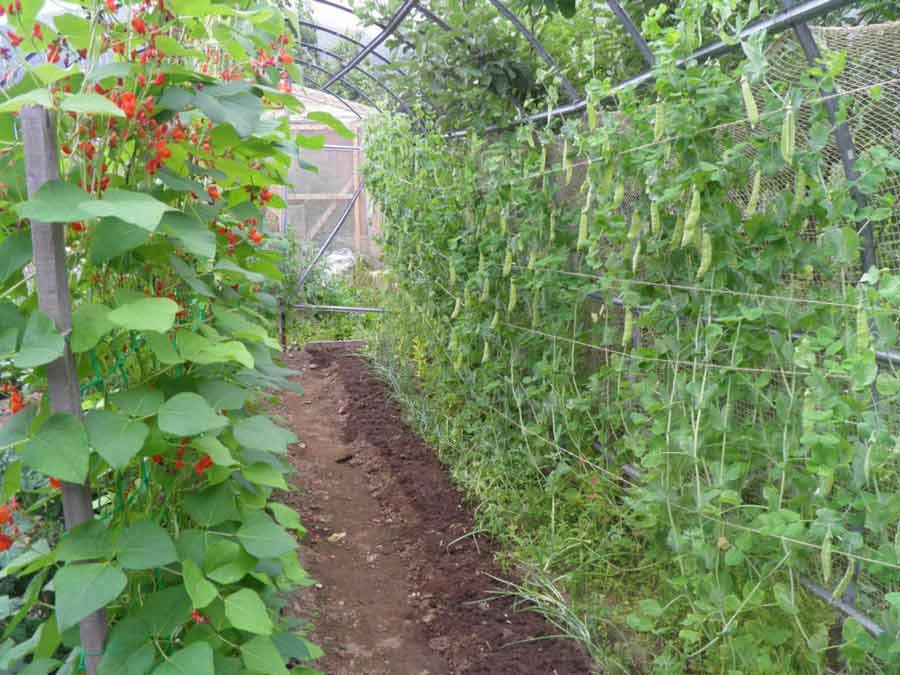

Secrets of a rich harvest
To obtain a harvest, it is recommended to follow the following tips:
- divide the garden into 4 zones and regularly change the planting of peas;
- pinching, after the plant reaches 20 cm, the top must be removed;
- before planting planting material in the ground, it is necessary to water the site with a urea solution;
- before planting, peas are soaked in hydrogen peroxide, which is mixed with water in a 1:10 ratio.
In order to get a harvest, it is enough to observe regular watering and care of the crop, as well as to select varieties with high yields.
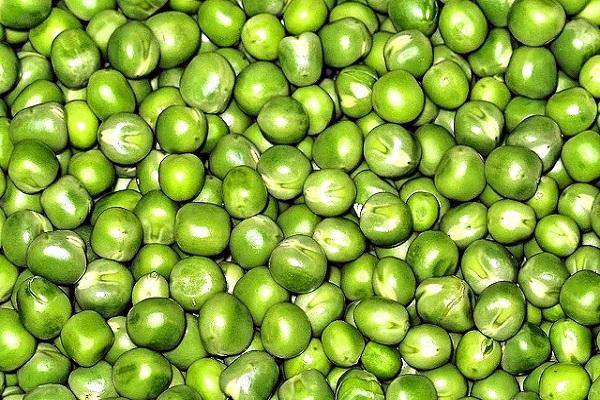

How to plant peas
This culture is better to take root in the place where cucumbers, potatoes, cabbage and pumpkin were grown earlier. It will be very good if complex fertilizers are applied under the predecessor vegetables. This will make the pea seeds taste softer. It is not necessary to make such top dressing before planting. Otherwise, you will get a crop with tops and fewer pods. When spring comes, compost can be added.
Peas tolerate low temperatures. For example, seedlings can survive frosts down to -5 degrees. Therefore, this crop is sown early. As a rule, this is done at the end of April, when the soil dries up. In summer, early ripening pea varieties are best planted no later than July 10.
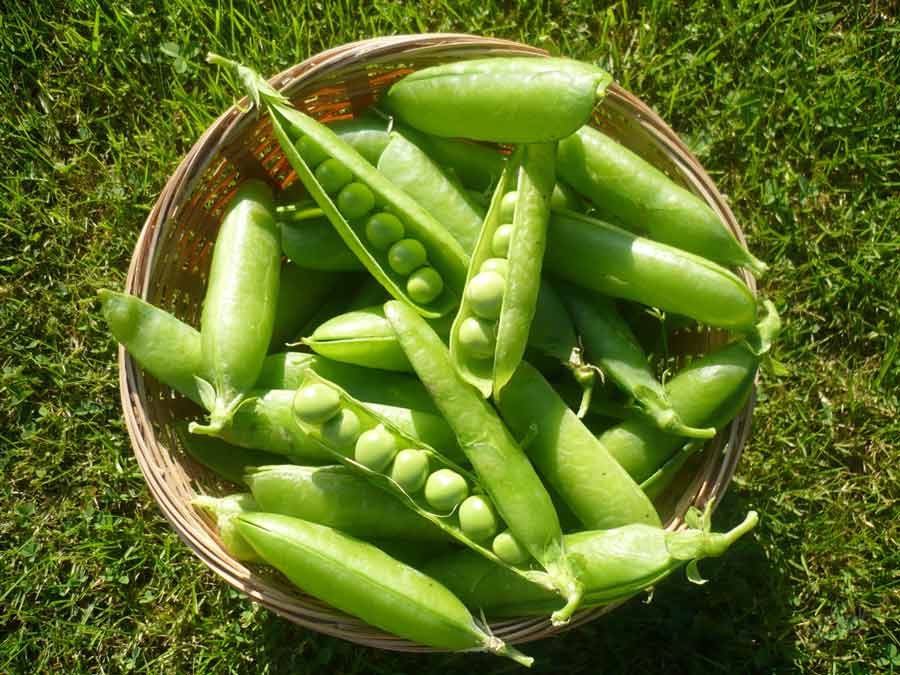

The soil for the peas must be fertile. In addition, this culture does not "take root" well if a lot of nitrogen is introduced into the soil. Peas also need a lot of light. Peas are very picky about him. Therefore, the best place for this culture would be an open area, protected from strong winds.
Peas can be planted not only with pre-germinated seeds. It is also planted dry. But you need to prepare the seeds before planting. It is necessary to take measures against pests, especially from root weevils.
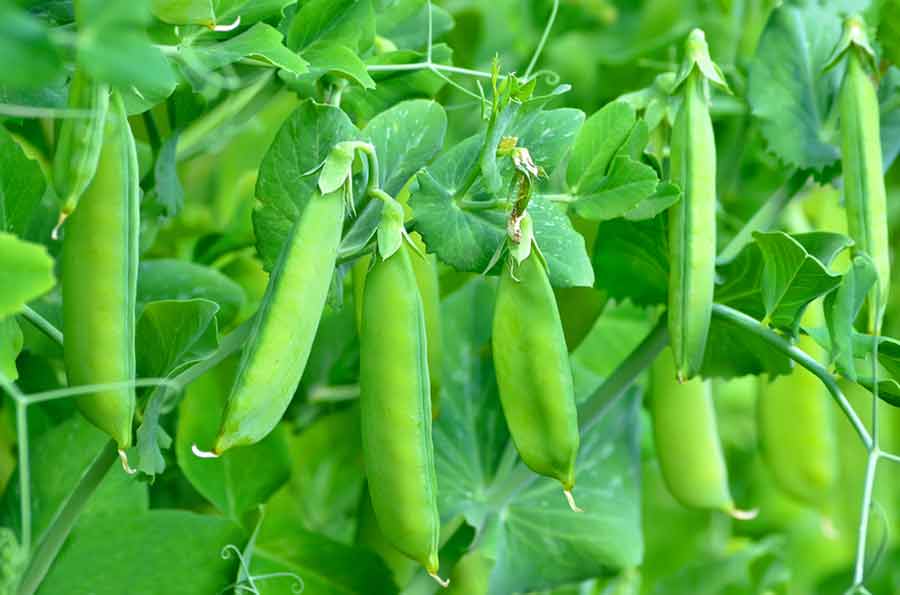

Peas harvest
After 60-80 days after sowing, you can harvest. If you started in April, then by July the pods will begin to ripen in stages, starting with the lower ones. Harvesting should be done at least every other day. Collect the peas carefully, pinching off the pods. Tearing them off is likely to damage the bush.
During the harvesting of peas, you can continue sowing it. You cannot use the vacated bed, you must prepare a new one. Planting peas in July can produce crops until the end of September.
Pea care
Peas don't need much maintenance. You just need to cover the seedlings in time, water them and weed them. The first shoots must be protected from birds. For example, cover it with an ordinary fishing net.
I must say that peas do not tolerate heat very well. Therefore, it should be watered abundantly. Under normal weather conditions, it should be watered once a week. When watering, you can apply complex fertilizers. During flowering, it is recommended to feed the plant several times with mineral dressings.After the end of watering, it is necessary to mulch the soil. The soil around the peas should be loosened periodically. This is useful in the early stages of growth.
Pea bushes must be tied up. This is done before the flowering stage. You can put pegs every 0.5 m as supports. Also, you need to build horizontal guides. They are made from ropes or wire. In this way, we will avoid finding the stalks of the peas on the ground, where they will begin to rot from excess moisture. In addition, on the supports, they will be ventilated, as well as warmed up in the sun.
As the seedlings get stronger and begin to grow, you need to put up twigs or pull a net near them. They are needed as a support for the pea whiskers. Thanks to the support, they can grow upward. The support can be made of metal mesh.
The first feeding of peas is chosen at the moment when the plants have reached a length of about 80 mm. Then you can feed it once every two weeks. Re-feeding is not as important as watering the peas. It must be watered systematically. This is actual in dry weather. However, in this matter you need to know when to stop, because peas do not react well to excess moisture. When the plant is in bloom and the beans are pouring, regular watering is recommended.
Young peas can be consumed a few weeks after sowing. Collect it very carefully. To increase the yield of peas, it is recommended to pick them daily. You need to pick only the strongest fruits.


Landing plot
This is especially true for small plots where the land is never empty. However, legumes are not overly demanding and will grow well with almost any horticultural crop. When choosing a predecessor, it must be borne in mind that peas are very picky about soil nutrition, and also require protection from weeds. Therefore, if eggplants, cucumbers or flowering, ornamental plants that draw out almost all organic matter from the ground grew on the beds, then it is better to leave them under something else.
Since it is recommended to grow peas in a new place every time, this question will arise regularly. But relatives are far from the best option. They build up a soil infection that will ruin your plantings. A plot occupied by perennial grasses is also a bad option, because it is here that dangerous pests hide and hibernate. Winter crops will be excellent predecessors.
Diseases and pests of peas
Peas are susceptible to various pests. Therefore, you need to know how to deal with these parasites that infect this culture. Of the pests, the pea stalk is dangerous. These caterpillars are in the ground in winter, then turn into butterflies, which lay eggs on leaves and stems. As a result, caterpillars again appear from them, which devour young plants.
With the help of preventive measures, the appearance of parasites can be prevented:
Since the fall, the land plot for peas needs to be dug up.
It is better to sow peas in the first days of spring.
The most unpleasant disease is powdery mildew. This disease can affect almost all plants and reduce the possibility of harvesting. For the fight, an infusion of sow thistle is used. Ready infusion must be sprayed on all plantings.


Pea diseases and their treatment
In summer cottages, peas most often get sick with the following diseases:
- powdery mildew appears as a white coating on stems and leaves. The fungus causes the foliage to dry out prematurely. You can fight this disease with the help of colloidal sulfur preparations;
- pea rust is manifested by the fact that on the leaves, and then on the stems and pods, many brown pads of various shapes are formed. The affected leaves dry out. The causative agents of the disease overwinter in the soil and on the roots of perennial weeds, especially milkweed. Prevention of the disease consists in pre-sowing treatment of seeds with formalin solution and careful weeding of the beds;
- in case of a downy mildew disease, the spots are not only white, but also yellowish, with a purple or gray bloom. Prevention consists in carefully collecting plant residues after the last harvest; if the disease develops, treatment is almost impossible;
- mottling of leaves and pods of peas appears as white or brown spots of various shapes with black dots. Then the disease spreads to the pea. As a result, the plants die. Dressing the seed with formalin almost guarantees the absence of this disease; when it manifests itself, spraying with antifungal drugs can save.
Photo gallery: signs of pea disease


Ascochitis - a common disease of peas
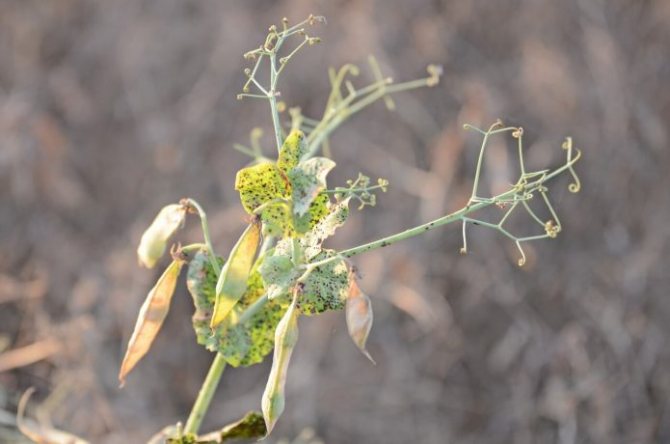

Rusty peas dry up
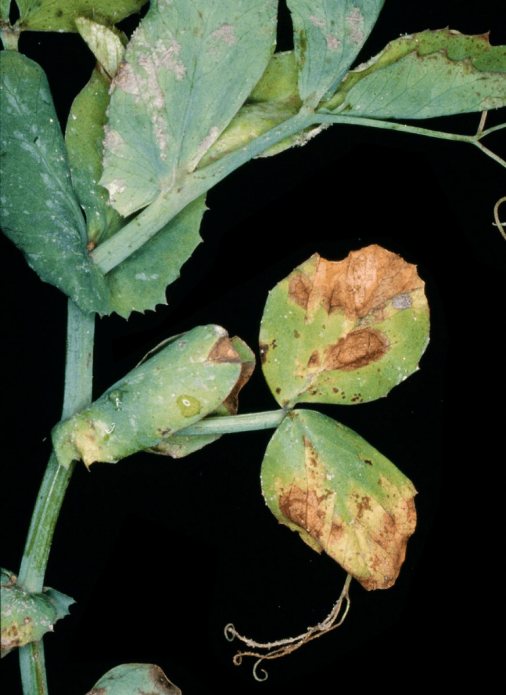

In case of downy mildew disease, peas become stained
Agricultural technology for growing sweet peas
When growing sweet peas for decorative purposes, the plants are placed at a distance of 40 cm from each other at the supports. To obtain a cut of flowers, peas are sown in rows or double-row ribbons. Between rows 1 m, and in rows between plants 20-25 cm.
Experienced growers practice repeated summer crops and, with daily careful cutting of flowers, harvest until late autumn.
Polka dots love a sunny and humid place. It grows best in fertile soils with regular and abundant watering. Mulching with clean, unprocessed straw or sawdust helps to retain moisture in the soil.
Very hot, dry and closed areas are not suitable for sweet peas.
The cultivation of annual sweet peas is carried out by sowing in open ground or through seedlings. Seedlings tolerate frosts down to -5 ° С, and hardened seedlings - up to -3 ... -4 ° С.
The seeds of peas have a very dense shell, which is why they germinate for a long time and uncommonly. To accelerate germination, they are soaked in hot (up to 70 ° C) water for 1-1.5 hours, and then washed in cold running water.
Seeds are germinated in sawdust, sand or a damp cloth at a temperature of + 20 ... + 24 ° C for 2-4 days. The seeds of one-year sweet peas that have nailed are planted for further cultivation in a permanent place or in pots for seedlings. Shoots appear in 6-12 days.
The seeds of most varieties are gray-brown or brown-brown in color. Their germination capacity lasts four years. Some varieties have very light, creamy seeds. Such seeds for growing sweet peas should be sown dry, without soaking. They will die when soaked.
Young sweet pea plants grow slowly and do not branch for a long time. Therefore, they must be pinched over the 2-3rd leaf, which causes branching.
You need to tie up the plants as early as possible, otherwise the stems lie down, intertwine and when you try to untangle them they easily break. The stems need to be guided slightly against the support so that they can freely cling to the antennae.
Plants require abundant watering, since with a lack of moisture, the buds fall off, the duration of flowering is sharply reduced and the flowers become smaller.
The seedlings are fed with nitrogen (urea), and adult plants are fed with a full complex fertilizer.
Top dressing during the growing season with organic and mineral fertilizers promotes the development of large flowers on long stems.
Sweet peas bloom in early July, sometimes even at the end of June.
Regular cutting of faded inflorescences together with peduncles helps to lengthen the flowering period, which lasts until frost. It is not for nothing that he is also called the "king of the summer" for such a long flowering.
In the flower arrangement of the garden plot, sweet peas are planted closer to the resting places.
It is widely used to decorate terraces, verandas; it is used to decorate retaining walls, gazebos, and gratings. Peas grow especially well on balconies, in window boxes, on the southeast side of houses.
On a sunny balcony, peas will bloom from July to autumn, if you take care of them regularly.
Be aware that it will not grow in small boxes, a container is needed with a depth of at least 30 cm.
The pea has a powerful, branched root system that ensures rapid growth, strong branching and continuous flowering of plants.
Everyone loves this plant for its amazing flowers of bright and delicate colors, the exquisite shape of which resembles moths, for its wonderful aroma and ease of growing.
Growing technology
It is necessary to grow peas, observing all the subtleties. Then the culture will delight with its harvest and good taste.
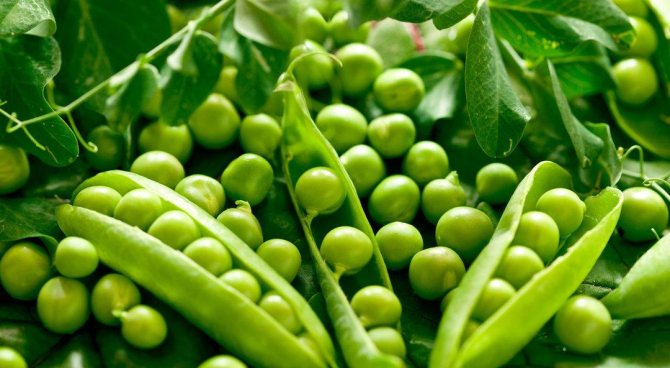

Seed preparation
Before planting, seed should be carefully inspected for damage and mold. Peas are placed in a saline solution (1 spoonful of salt per liter of water) for an hour, floating peas are removed. After all damaged specimens are rejected, the peas must be treated with an antiseptic. Manganese is the most commonly used. It is necessary to prepare a light solution (1 gram per 1 liter of water). The peas are placed in a solution and left for 15-20 minutes. Then it dries.
Soak
The use of soaking softens the hard shell and accelerates the germination of the peas. The planting material is filled with water and left for a day, after which the water is drained and the seeds are dried.
Germination
To carry out the germination procedure, you need to take a flat plate, place a piece of cloth soaked in water. Peas are laid out on top and covered with the same piece of fabric. For germination, you need to regularly moisten the fabric.
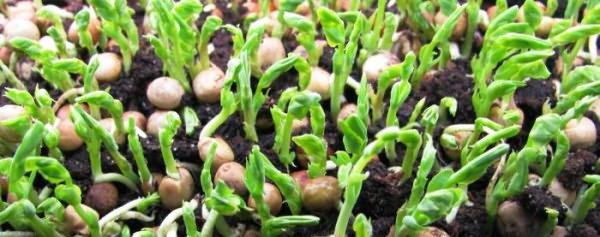

Growth stimulants
The use of a growth stimulant increases germination. The seeds must be soaked in the supplement for an hour. Such seeds germinate evenly and are more resistant to environmental influences.
Warming up
The warming up method can be carried out in the following ways:
- Warming up on the battery. The seeds are laid out on paper and placed on a hot battery for a day.
- The seeds are laid out on a flat surface and warmed up in direct sunlight for 2 days.
- The seeds are placed in a container and filled with hot water (50 degrees), left for 15 minutes, and then dried.
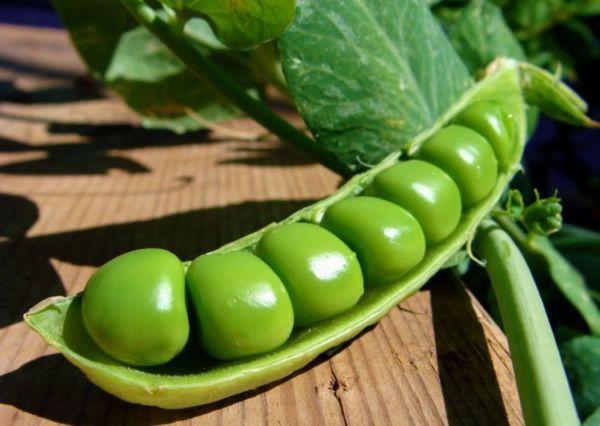

Warming up increases the germination rate and accelerates the emergence of sprouts.
Landing scheme
Peas are planted using the following method:
- in the prepared area, it is necessary to make holes up to 10 cm deep;
- seeds are placed in holes at a distance of 6-10 cm from each other;
- the holes are covered with soil and slightly compacted.
See also
Useful properties and harm of peas for the male and female body and recipes for the treatment of diseases
To read
The distance between the beds should be at least 30-40 cm.
Important. If there is not enough moisture in the soil, it is necessary to water the wells with warm water before planting the seeds.
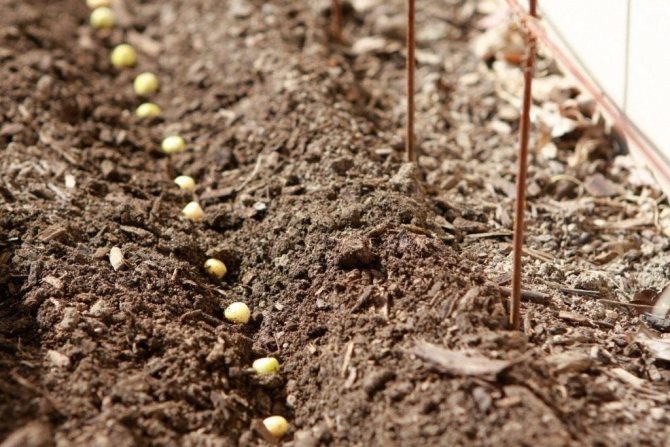

Landing before winter
For this method of planting peas, it is necessary to use varieties that can withstand low temperatures, for example, HC Frost. For planting, it is necessary to prepare the soil, dig up and add humus. Small furrows are made in the prepared area, when the first frost appears, the seeds are placed in the soil and sprinkled with earth. Furrows are not watered.
The seeds must be placed dry, as the germinated material may die. Seedlings are formed in early spring.
Tall
Varieties are considered tall, the stem of which stretches above 115 cm. The stems of some plants can grow up to 2.5 meters. They are difficult to grow, but you can get a rich harvest. A feature of cultivation is the installation of a support after the appearance of 3-4 leaves. It is impossible to plant seeds densely, as they show requirements for light and heat. If there is little sunlight, then the stem lays down, stretches and becomes brittle.
Good pea seeds for open ground are: Zhegalova 112, Alderman, Telegraph, Chudo-shovel, Shuger snap. You can choose medium-sized varieties, the height of their stem is above 70 cm: Excitement, Voskhod, Emerald, Madonna, Horn, Giant.
Madonna
German breeders have created Madonna pea seeds. They are characterized by high yields and average ripening periods. The period of technical ripeness is 70 days.
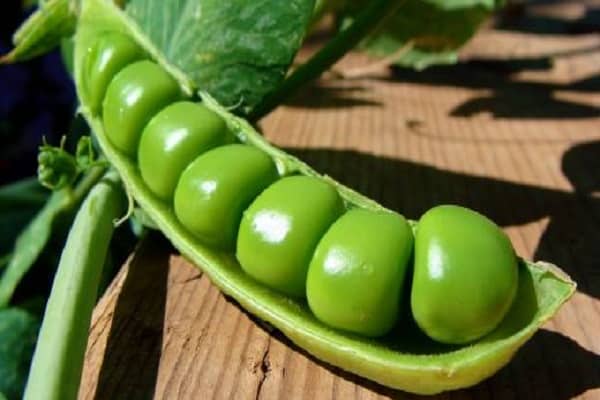

The height of a half-leafless plant reaches 80 cm. The pods are light green, slightly curved in shape with a blunt end. Shedding resistance is average, but the variety is well resistant to disease, drought and lodging.
Rocket
In the description of the Rocket pea variety, it is noted that the plant belongs to the high-yielding type of mustachioed form. The height of the plant is average, 60-90 cm.
The variety is moderately resistant to ascochitosis, moldy gray mold, resistant to lodging and shedding. Rocket pea seeds are responsive to nitrogen and potash fertilizers. Nitrogen fertilizers should be applied only when necessary.
Origin of culture
It is believed that mankind owes peas to South-West Asia, more precisely to the modern Afghan, Indian, Ethiopian, and Transcaucasian territories. Thanks to archaeological research, it became possible to trace how this culture spread throughout the world. So, more than 20 thousand years ago, in the Neolithic times, on the territory of modern Serbia, Croatia, France, Italy, Germany, Austria and other European states, this vegetable was cultivated on a par with cereals: millet, barley, wheat.
Did you know? Currently, India and China produce 70% of the world's peas. Canada sows it with the largest, almost 1.5 million hectares, areas in the world, and France demonstrates the highest yield, collecting more than 20 centners from each sown hectare.
Archaeological research reports on the widespread use of peas by representatives of the Cretan-Mycenaean civilization, which ended its existence one and a half thousand years before the onset of a new era. Moreover, they not only ate it themselves, but also fed their pets. In the 1st century BC. e. this vegetable made it through India to China, and then to Japan. It is known that the inhabitants of medieval Europe very willingly included peas in their diet, because they can be stored dry for a long time, they are cheap and nutritious.


Due to these qualities, the vegetable was in great demand by the poor segments of the population of England, France, Scandinavia and other countries. It was often cooked with lard, and such a dish could provide a person with the energy necessary in the mild conditions of European winter. Peas entered the New World only by the end of the 15th century, when Christopher Columbus sowed them in 1493 on Isabella Island. On our lands, the culture was cultivated by local tribes in the III-II millennium BC. e. In the 18th century, it becomes very widespread, popular and in demand.
Photo gallery
So that the seedlings are friendly
Peas in the garden readily grow and bear fruit, but let's find out what conditions can be considered optimal. It is best if the peas are sown at a temperature of 4-6 degrees Celsius. Therefore, it is good if the disembarkation takes place in early spring. If the area for peas is small, stretch the film to keep the earth warm. Then back in April it will be possible to make crops, and in June enjoy fresh peas. The plant can withstand light frosts, up to -4 ° C, so you don't need to use additional covering material. Sowing peas is best done in a sunny location. It can survive moderate shade, but the number of pods may decrease.
Sugar peas
Pea seeds are distinguished by the absence of parchment in the bean. They can be eaten with a bean, cut into salads and first courses. It is best to choose local varieties. There are relatively few of them, they began to be withdrawn recently.
- Candy is the most popular of the varieties of this type. It is meant for freezing and canning, so you will enjoy your harvest all year round.
- Peas Alpha. One of the main advantages is drought tolerance: it practically does not require watering. Ideal for a summer cottage that cannot be visited every day.Bred one of the first, but does not lose its relevance. It is planted annually in hundreds of garden plots and pleases children and adults with delicious fruits.
It is very easy to grow peas in the garden, but when choosing a variety, you need to immediately decide whether you are taking it to earn money or for your family. Brain varieties are much tastier, but they have low yields and a short shelf life. If you are faced with the task of selling products through retail chains, then it is recommended to pay attention to universal varieties in order to ensure that you make a profit.
Harvesting
55 days after sowing the peas, it is time to harvest the beans. The consumer properties of green peas directly depend on how timely it was done. In most areas where this crop is cultivated, the optimal time occurs 18-20 days after flowering. If we consider brain varieties, then after 22-24 days. The number of fees may also vary. In early ripening varieties - up to 4-5 times per summer, in late varieties - up to 8 times. The collection of young pods should be done daily or every other day.
Gardeners use a simple technique that allows you to extend the harvest period. For this, crops are sown with different ripening periods, or several beds of the same variety are made, but the seeds are planted in the ground in stages, with an interval of 2-3 weeks. The last sowing is done 60 days before the onset of the first frost. If the area allows, it will be possible to grow so many beans that it will be enough to freeze and make canned food, eat fresh peas. This plant produces surprisingly tasty and healthy fruits that help the hostess to diversify the menu of her household.
It is best to use glass containers for storing beans. The jar is closed and put away in a dark place. But it is undesirable to use polyethylene.
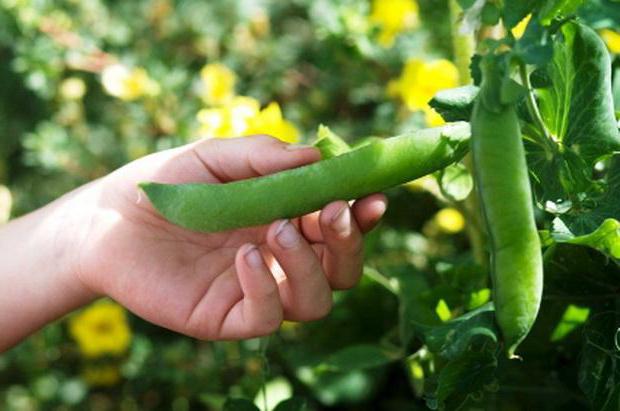

Soaking before planting
Previously, before soaking, vegetable seeds must be sorted out. For planting, full-weight, whole, pest-free peas are suitable. You can soak in special solutions or simply pour the selected seed material with plain warm water.
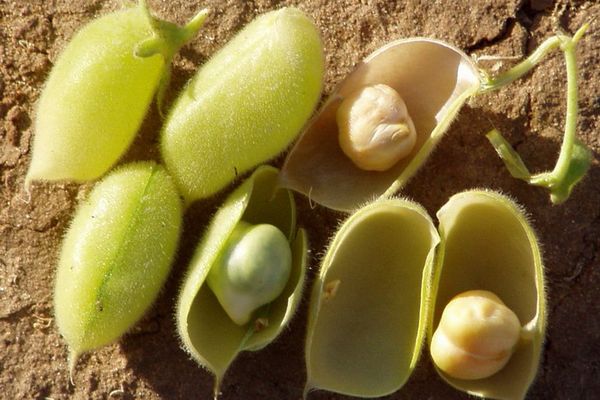

For complete swelling, 14 hours are enough. At the same time, it is recommended to change it to new water every three hours. After soaking, the seeds are spread on a dry cloth surface and dried a little.
It is useful to hold the peas for the first three hours in special solutions that will make the plant healthy, strong, and resistant to diseases. Popular preparations for diluting the solution include: Epin, Humat, Nitragin.
To disinfect pea seeds of different varieties, they can be placed in a weak solution of potassium permanganate for 15 minutes.
Chemical composition and calorie content
Peas contain a large amount of vegetable protein, similar in composition to animal, having in its composition essential amino acids and other substances necessary for the body. In terms of vegetable protein content, peas are in second place and are second only to lentils, which are in the lead in this list.
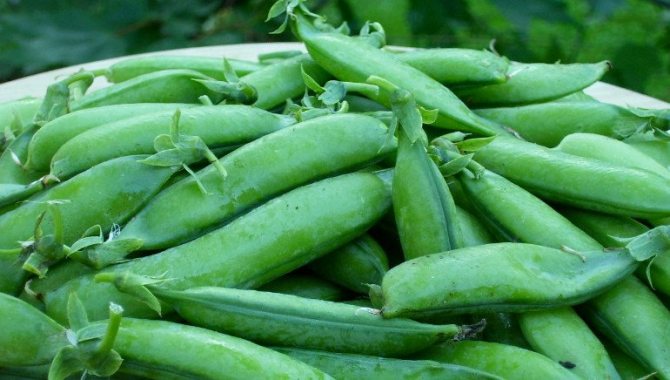

For every 100 grams of edible pea content, there are:
| Nutrient | number | Norm |
| Calorie content | 299 kcal | 1684 kcal |
| Protein | 23 g | 76 g |
| Fats | 1.6 g | 60 g |
| Carbohydrates | 48.1 g | 211 g |
| Alimentary fiber | 10,7 g | 20 g |
| Water | 14 g | 2400 g |
| Ash | 2.6 g | ~ |
| Vitamins | ||
| Vitamin A, RE | 2 μg | 900 mcg |
| beta carotene | 0.01 mg | 5 mg |
| Vitamin B1, thiamine | 0.9 mg | 1,5 mg |
| Vitamin B2, riboflavin | 0.18 mg | 1.8 mg |
| Vitamin B5, pantothenic | 2.3 mg | 5 mg |
| Vitamin B6, pyridoxine | 0.3 mg | 2 mg |
| Vitamin B9, folate | 16 mcg | 400 mcg |
| Vitamin E, alpha tocopherol, TE | 0.5 mg | 15 mg |
| Vitamin H, biotin | 19.5 mcg | 50 mcg |
| Vitamin PP, NE | 7.2 mg | 20 mg |
| Niacin | 2.4 mg | ~ |
| Macronutrients | ||
| Potassium, K | 731 mg | 2500 mg |
| Calcium, Ca | 89 mg | 1000 mg |
| Magnesium, Mg | 88 mg | 400 mg |
| Sodium, Na | 27 mg | 1300 mg |
| Sulfur, S | 170 mg | 1000 mg |
| Phosphorus, Ph | 226 mg | 800 mg |
| Chlorine, Cl | 57 mg | 2300 mg |
| Trace elements | ||
| Iron, Fe | 7 mg | 18 mg |
| Cobalt, Co | 8.6 μg | 10 mcg |
| Manganese, Mn | 0.7 mg | 2 mg |
| Copper, Cu | 590 mcg | 1000 mcg |
| Zinc, Zn | 2.44 mg | 12 mg |
| Digestible carbohydrates | ||
| Starch and dextrins | 44.7 g | ~ |
| Mono- and disaccharides (sugars) | 3.4 g | max 100 g |
| Saturated fatty acids | ||
| Saturated fatty acids | 0.2 g | max 18.7 g |
Important! The starch found in peas is used in the production of biodegradable plastic materials that are biodegradable in the environment.
How to grow peas?
Peas are cold-resistant crops, and therefore sowing can be started in early spring. This crop can be grown after any vegetables. The only condition is a large amount of humus. But peas are not picky about nitrogen.
On the roots of plants, as well as on many other legumes, nodule bacteria develop and live, which are able to assimilate atmospheric nitrogen. If you are on some site for the first time, then you can add a special preparation "Nitragin" along with the seeds during sowing. It will help plants develop well initially without nitrogen starvation. It is good to add rotted compost or humus, nitrogen and phosphorus-potassium fertilizers under the peas.


It makes sense to fertilize the soil well for peas. The cultivated areas, prepared and processed in advance, give excellent yields, and the beans themselves have a sweeter and more delicate taste.
Brain varieties
They are named so because pea seeds have folds in the form of convolutions. This type is suitable for those who want to grow the plant solely for food in the summer, while the peas are green and sweet.
- Voronezh green - the first collection of fruits falls on the 40th day after germination. The plant is large with few leaves, making it easy to harvest. In technical ripeness it is green. The plant is resistant to fungal and bacterial diseases.
- Tropar - if you want to do canning in order to cook delicious salads and soups all winter, then choose this variety. Pea seeds from this litter are usually sold in specialized stores, you do not have to look for them. Ripeness occurs 50 days after planting, the stem is low, erect. Despite the low yield, peas are in great demand.
Watering
Since it is supposed to grow peas in the open field in just one and a half to two months, the plant needs a sufficient amount of moisture and nutrients. In principle, the care is not much different from that which other vegetable crops require. It is especially important to make regular watering, always at the root. The amount of moisture is highly dependent on the air temperature and the place of planting. The hotter it is outside and the sunnier the place, the more water the peas need. Despite the fact that the rhizome grows deep in one and a half meters, the bushes will not grow without watering.
Choosing a place for planting peas in the garden
For peas, a sunny, well-lit area, windless and quiet, is selected. Strong gusts of wind can break fragile stems. This crop can be placed along the fence or near the wall of the house, along which the stems will rise up. The plant tolerates light partial shade, but bears fruit better and more abundantly when all the foliage is well illuminated by the sun.
Some vegetable growers practice sowing peas in the trunks of large fruit trees (apple trees, pears and others), where they first pour a nutritious soil mixture from fertile garden soil and humus with a layer of at least 10-15 cm. Growing peas in the country, in the garden or in the garden is within our power any novice gardener, subject to simple rules.
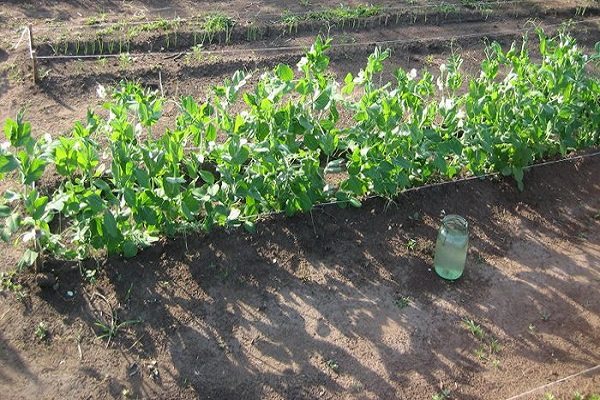

Climatic conditions for growing peas
To get an early and plentiful harvest, you need to try to create optimal conditions for growing peas. The culture loves good moisture, therefore, for the appearance of friendly shoots, the seeds are planted in moist soil. Good and regular watering will allow the plant to grow quickly and increase yields. Constant moderate humidity is especially necessary during budding, flowering and fruit setting. With a lack of moisture, the pea bush sheds its buds and ovary.
Peas can tolerate short-term drought because the long taproot uses moisture from deep-seated soil layers (over 1 m). But he does not like the close location of cold groundwater, since the root system can rot.
This legume is cold-resistant, its seeds germinate already at + 5 ° C. Seedlings can survive short-term frosts down to -6 ... -4 ° С. During the formation of the ovary, the optimal temperature indicators should be in the range of + 13 ... + 15 ° С, for the rapid growth of beans, a temperature of at least + 17 ... + 22 ° С is required.
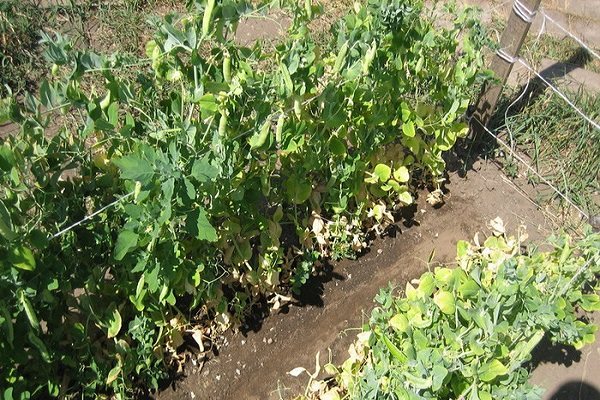

What kind of soil do peas like?
Peas are undemanding to the composition of the soil, but they will develop better and bear fruit more abundantly on loose, moderately moist loams and sandy loams with a sufficient content of phosphorus and potassium. When digging, it is recommended to add coarse river sand and humus to clayey heavy soil (1 bucket per 1 m²). In sandy soil, which does not retain moisture and fertilizers well, you need to add clay to increase the moisture capacity (1 bucket per 1 m²).
See also
How to properly plant and grow peas indoors and in a greenhouseRead
The culture prefers soils with a neutral or slightly alkaline reaction, therefore, acidic soils must be deoxidized with fluff or dolomite flour (300-400 g per 1 m²). Too rich and fertilized soils are also harmful to peas, since an excess of nutrients provokes the rapid growth of tops. In this case, the pods will be small and few. For specimens from which seeds will be collected for propagation, the soil is prepared especially carefully.


The best neighbors of peas
The yield of a crop is strongly influenced by which plants were cultivated in this place in the previous year. Peas grow well after early potatoes, pumpkin (squash, pumpkin, cucumber), cabbage, tomatoes. He will feel great in the garden next to corn, nightshades (potatoes), crucifers (cabbage, radishes). Other legumes (beans, chickpeas, soybeans, lentils, and others) are bad precursors for this crop. With proper crop rotation, peas are planted in the same area no earlier than 3-4 years later.
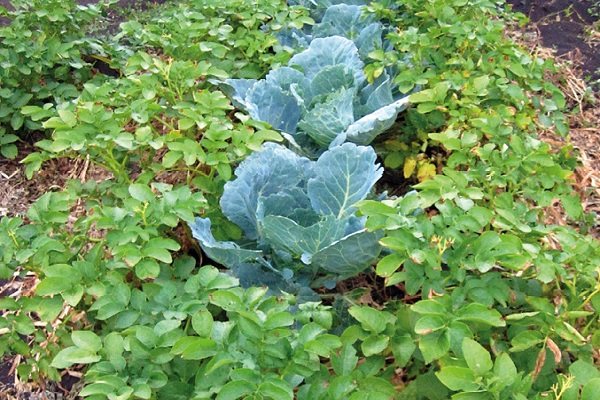

Top dressing
Supports are installed while the plants are still very small. As soon as they rise above the ground, you need to tie up young seedlings. Then they will grow by themselves, clinging to the branches. Peas usually grow quickly. If you see a bush sitting still, it is most likely lacking in nutrients. In this case, you need to make additional feeding. As you remember, the first was carried out when the plant reached a height of 5-8 cm, and the second - after two weeks. You cannot repeat the procedure more often than once every 14 days.
Since even a novice gardener can grow peas in the open field, there will definitely be a good harvest. The main task of the gardener is to protect against weeds, loosening the soil, and timely installation of supports.
Pea species
There are two types of this garden crop:
- field;
- sowing.
Field varieties are not used for human food, but they are excellent food for domestic animals, for this they are sown artificially.
Types of seed peas
For culinary purposes, sowing plant varieties are used:
- peeling smooth-grain;
- peeling cerebral;
- sugar cerebral.
The harvest of smooth-grain peas is used raw for food. Unripe are used for canning or freezing. Dried seeds are used for making soups, cereals, mashed potatoes.
After drying, cereal grains have a shriveled, unmarketable appearance, therefore they are rarely used for drying. When green, they are sweeter and softer. These varieties, however, are more susceptible to disease and are more likely to be affected by pests.
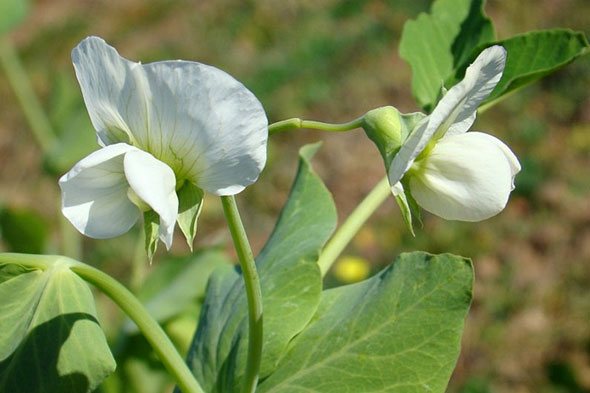

On sugar brain varieties, fleshy beans are tied, which are eaten whole. The edible state remains almost until fully ripe.In addition to these, there are rare varieties that may have unusual shades or very large pea sizes.
Ripening dates of peas
When choosing a variety for planting, you should know the ripening period (presented in the table)
| Variety type | Ripening period, days |
| very early | 50—55 |
| early maturing | 56—60 |
| mid-season | 61—70 |
| mid-late | 71—80 |
| late | About 100 |
Beanpole
Even before flowering, it is imperative to tie up the bushes. If they lie on the ground, part of the crop will rot, and the ovary will be much smaller. Giant varieties, that is, the most productive, are especially afraid to be left without a garter. The installation of the support provides ventilation and heating of the plant. Additionally, farmers note that the vertical arrangement avoids a number of diseases.
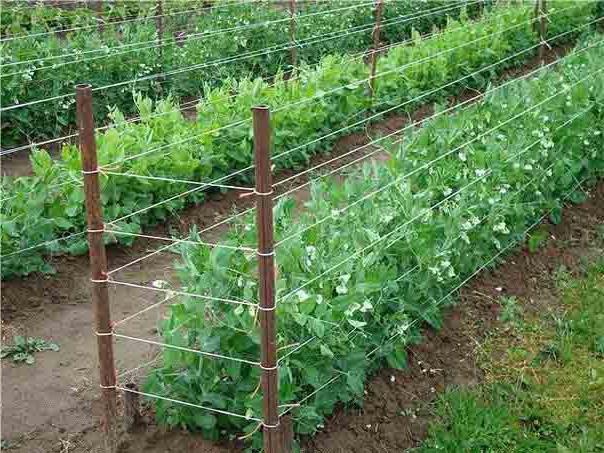

There are a lot of ways to install a support for peas:
- Saving time. In this case, the seeds are sown randomly or in rows on the garden bed. In a similar way, twigs from branches are stuck into the soil. You won't need too many branches. In fact, only a few plants need to be supported. Everyone else will hold on to them. The rods can be spaced 40 cm apart.
- Nest location. It is very convenient to prepare holes in which 5-8 peas are located in a circle. One rod is placed in the center.
- Plastic mesh. If it is available, then the scheme is even simpler. Seeds are sown in two grooves, between which a mesh net is installed.
- Support on the twine. While the peas are still small, sticks are placed at the edges and in the middle of the beds at a distance of 1 meter. Then these sticks are entangled with twine at a height of 30 cm, creating a net. The twine is pulled along the contour, diagonally, in width. As soon as the plants rise to it, they cling, and will not fall anywhere else.
- Huts. These are the simplest constructions that are made from flexible branches. Sow two strips of peas and set twigs on both sides of them, and tie the tops.
Planting peas, its beneficial properties and varieties
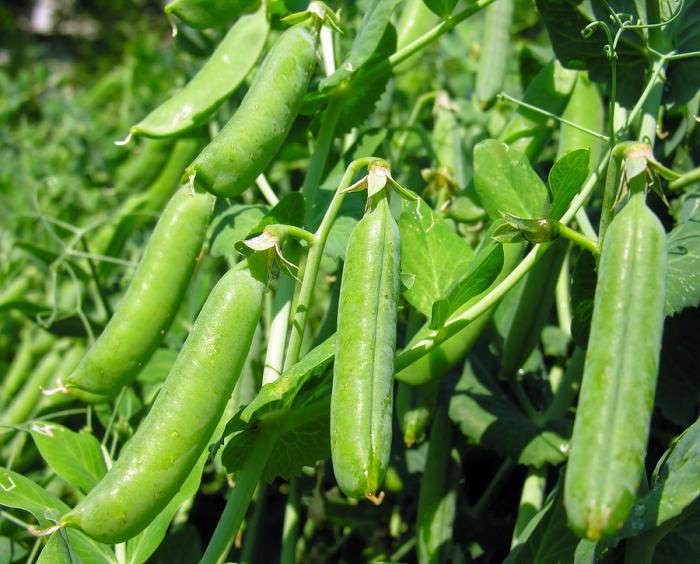

1:502 1:512
Legumes are one of the most interesting, mysterious plants on earth. After all, they are very close to meat products in terms of their properties, nutritional value, protein content, and their amino acid composition, and even better than meat in terms of digestibility by the body. I am sure that every gardener has peas on his plot. Firstly, planting peas, their cultivation does not present any particular difficulties. Secondly, freshly picked green pods are a real treat. Thirdly, the beneficial properties of peas are a real gift from God. It contains a unique assortment of nutrients. Fourthly, there are a great many varieties of peas - the gardener has plenty to choose from. Now agronomists call Russia a pea country. No wonder. We consume more peas than any other country in the world. It suits us better than other legumes.
1:2100 1:9
Peas are one of the oldest cultivated vegetable plants. This is one of the few plants that willingly changes its properties during the selection process. In just a few years, Russian breeders managed to completely rebuild the architectonics of the pea. If until the middle of the 20th century it lay on the ground, and the pods had to be saved from rot in rainy weather, now the plants are slender solid stems that stand perpendicular to the ground and hold tight pea pods.
1:902 1:912
During my childhood, pea stalks reached a length of one or more meters. My parents always planted corn to support him. Now, thanks to the efforts of our breeders, varieties that do not exceed 70 cm have been bred. The main plus is that they do not lie down due to the fact that they cling to each other with antennae, thereby strengthening each other.
1:1548
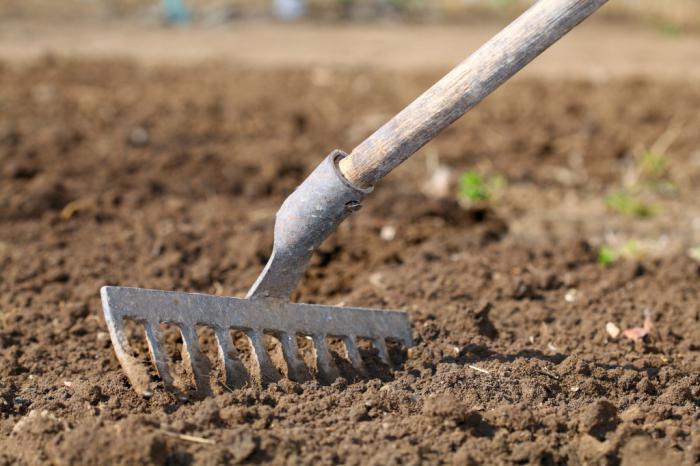

2:514 2:524
For best results, choose an open, sunny location with good drainage for planting peas. It is photophilous, frost-resistant, grows well on light, fertile soil.It is best to fill the garden bed with humus, ash, azofoskoy, and if the soil is acidic, then add lime. Peas are usually planted outdoors from March to June, as soon as the soil warms up to 10 ° C. In the Kuban, it can be sown in February windows. Peas do not tolerate heat well, so planting early is the right decision.
2:1538 2:9
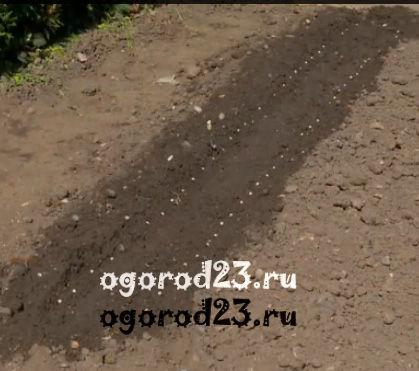

3:514 3:524
With the corner of the hoe, sew a line 3-4 cm deep from south to north. If the ground is dry, water it. Spread the seeds 5 cm apart. Then cover them with earth, lightly "trample" the bed with the flat surface of the hoe. This is necessary so that the seeds come into contact with the moist soil more densely, then they will germinate faster and more amicably. To speed up emergence, seeds can be soaked for 12 hours before planting. The row spacing for sowing is 15-20 cm.
3:1392 3:1402


4:1907
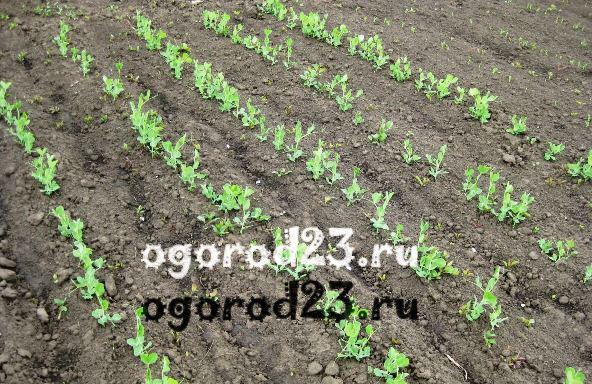

5:523


6:1028 6:1038
Pea seedlings are not afraid of frosts down to -6 ° С. Continue the seed conveyor every 2 weeks to get the green vitamins for as long as possible. Later sowings of peas can be placed in partial shade, but so that they are in the sun for at least 6 hours a day. It is advisable to mulch crops. Further care - the necessary watering, loosening, top dressing, small hilling. Before flowering, peas need moisture, there should be enough of it. But he especially needs it during flowering, as well as after setting the pods for 2 weeks.
6:2135 6:9
To effectively use the space of the garden, planting peas can be done between rows of radishes, spinach, lettuce, and other plants that give early greens. Cucumbers and potatoes are good neighbors for him, but not very good for him when sown next to garlic or onions.
6:551
Peas will appreciate the addition of wood ash to the garden bed before planting. Peas can be poured with an ash solution a couple of times during the growth period (1 glass of ash per bucket of water).
6:864 6:874


7:1379 7:1389
When picking peas, be sure to hold the whip with one hand, and pick off ripe pods with the other - otherwise you risk uprooting the plant - it has a root system very close to the soil surface. It is best to pick green peas in the morning, after the dew has dried, then they are the most juicy and delicious.
7:1988 7:9
The biggest problem with peas is root rot, which causes blackening of the foliage and death of the plant. It is also susceptible to powdery mildew in wet weather. The only way out is to look for and sow varieties that are resistant to these diseases.
7:477 7:487
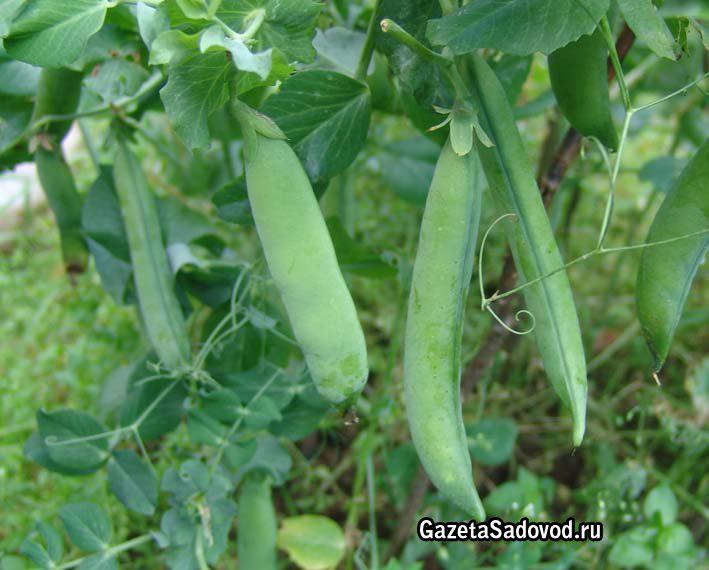

8:992 8:1002
There are many varieties of peas that differ in their properties, early maturity, and productivity.
8:1230
Vegetable varieties are divided into shelling (Alpha, Viola, Dingo, Early Gribovsky, others) and sugar (Sugar Prince, Alexandra, Sugar-2, Zhegalova).
8:1495 8:1505
Hulling pea varieties have hard shells covered with a parchment layer, so they use peas, while sugar peas use whole shoulder blades for food, along with unripe grains.
8:342
For vegetable growers and farmers, the Crimean Experimental Breeding Station has created varieties of vegetable peas of different ripening groups (from early to late ripening). They have a significant advantage over foreign varieties, both in quality and in the quantity of the crop. Our varieties are more resistant to environmental factors and diseases characteristic of the Kuban.
8:972
- Alpha - the growing season from germination to technical ripeness is 45-55 days. Plants of medium height (up to 50 cm). Peeling pods (these varieties have a coarse parchment structure on the inner side of the valves), saber-shaped. Seeds of the brain, medium in size, contain up to 5.7% protein.
- Alpha 2 - early ripening variety, from germination to harvesting 53-55 days. Stem length 70-90 cm. Has 6-9 beans per plant. Bob 7 cm long, 1 cm wide, contains 7-8 pcs. seeds. Dry seeds (biological maturity) are yellow, and their surface is wrinkled. Relatively resistant to root rot. Suitable for intensive cultivation technology.
- Vesta - medium-early variety, from germination to harvesting 56-58 days. Stem 65-75 cm long. Forms 7-10 beans per plant.Pod up to 9 cm long, containing 7-9 seeds. At biological maturity, the seeds are green, wrinkled. The variety is relatively resistant to root rot. Suitable for intensive technology.
- Golden eagle - a variety of medium-early ripening, from germination to harvesting for green peas 60-62 days. The stem is 70-80 cm long. It has 2 flowers per peduncle. Pod 10 long and 1.1 cm wide. Seeds contain 9-10 pcs. Seeds in biological maturity are cerebral, yellowish-green in color. Differs in very high productivity.
- Sail - mid-season variety, from germination to harvesting for green peas 65-67 days. The stem is 60-70 cm long. The leaf type is mustachioed, which allows the plants not to lie down until harvesting. Has 8-12, maximum 15 beans per plant. Pod 8-9 in length and 1.2 cm in width. Seeds - cerebral, green.
- Pretty boy - medium-late variety, the period from germination to harvesting for green peas is 68-72 days. The stem is 75-85 cm long. It has 2-3, more often 3 flowers on a peduncle. Pods per plant 6 - 12. Pod 10 long and 1 cm wide. Seeds are green, cerebral. The variety is relatively resistant to root rot.
- Source - late ripening variety, from germination to harvesting 73-75 days. Stem 75-80 cm long. On a plant 6-8, maximum 10 beans 10 long, 1.3 cm wide. In biological maturity, the seeds are green with a wrinkled surface. More resistant to spring frosts, relatively resistant to root rot.
- Alderman - mid-season, sugar variety (varieties without a parchment layer) with a long fruiting period. Plants up to 1.5 m high. The pods are large, contain up to 10 or more peas.
- Ambrosia - early maturing, unpretentious sugar variety. Plants up to 60 cm high and can be grown without supports.
- Beagle - ultra-early ripening sugar variety. Its pods contain 8 peas.
- Belladonna 136 - late ripening variety. Seedlings are not afraid of frosts, and adult plants are not afraid of droughts. Brain seeds, blue-green color. The pod contains up to 9 seeds.
- Viola - a mid-season variety of peas for canning purposes. The growing season from germination to technical ripeness is 65-75 days. The pods are up to 9 cm long. The peas are leveled in size, of high taste.
- Vega - mid-early variety of shelling peas. Plant height up to 100 cm. This variety prefers fertile soil with a powerful arable layer, is picky about soil moisture, but does not tolerate close standing groundwater. Shades poorly.
- Glariosa - early ripening variety of shelling peas with saber-shaped pods. Plant height up to 70 cm. A universal variety, the seeds are very rich in proteins.
- Henry - early ripening variety of sugar peas with a growing season from germination to technical ripeness of 40-45 days. Sugar scoops, up to 8 cm long, are used in the phase of pea formation.
- Gulliver - a variety with very small seeds. Plants up to 90 cm high. The seeds are tiny but extremely sweet. The variety is intended for fresh salads.
- Debut - a mid-season variety of cerebral peas, ripening of the pods is amicable. Fresh green peas taste great. The variety is weakly affected by diseases.
- Zhegalova 112 - mid-late dessert pea variety. The stems are very high (up to 180 cm), without a garter they lie down to the supports. It ripens late, but the pods are sweet and extremely large - they reach a length of 18 cm, tender, fleshy, juicy, without a parchment layer.
- Kelvedon - early ripening sugar variety of peas. Suitable for sowing at different times. Resistant to powdery mildew.
- Small miracle - mid-early hulling variety with fine brain seeds of excellent taste. Plants are undersized. Pods are harvested for about two weeks.
- Honey cake - early ripening sugar variety with amicable ripening of beans. Plants are up to 100-120 cm high. The peas are tender, with a very sweet taste.
- Meteor - an early ripe fruitful variety with a tough stem. Suitable for processing and freezing. The seeds are densely packed in a pod.
- Inexhaustible 195 - mid-season variety with a growing season from germination to the first harvest of 55-60 days. Stem up to 120 cm high, requires a garter. The pods are tender, juicy, large, up to 10 cm long with sweet peas.
- Vegetable 76 - mid-early variety with a growing season before the first harvest of 50 days. The seeds are of excellent quality and contain up to 5.8% protein.
- Onvard - early ripening sugar variety. Plants up to 70 cm high.
- Superb 240 - mid-season variety with a growing season before the first harvest of green pods 55-60 days. The seeds have excellent taste, high protein content - 5.8% and sugar - up to 7.5%.
- Record 158 - mid-season variety with a growing season before the first harvest of green pods 55-60 days. The taste of the seeds is excellent, with an exceptionally high protein content - 6%.
- Sweet giant - mid-season variety, plants up to 80 cm high. The pods are up to 10 cm long, ripen together. Peas in technical ripeness, evened in size, excellent taste.
- Soup spatula 181 - early ripening variety, before the first collection of pods takes only 45 days, their collection stretches for a month. The paddles 6-7 cm long are sugar-coated, they have no parchment layer. The seeds are not large. The shoulder blades are delicious in soups, but especially when canned.
- Sugar cerebral - a mid-season variety of sugar peas with a growing season up to the first harvest of 45-50 days. Shoulders up to 10 cm long are juicy, without a parchment layer, they are eaten whole together with sweet green peas.
- Tyres - early maturing peeling variety with amicable ripening. Green peas taste great both fresh and canned.
- Hawa pearls - mid-season variety. Plants up to 90 cm high. Peeling pods up to 8 cm long. Good taste.
- Miracle of Calvedon - an early variety of shelling peas. The stems are medium-sized, 60 cm high, the lashes do not lodge. Pods up to 9 cm long. Seeds are small, cerebral, excellent taste.
- Sugar Snap - mid-early variety. The plant is up to 180 cm high. The pods are thick, juicy, without a parchment layer. Peas do not lose their tenderness and sweet taste even if they dry out.
- Edula - mid-season sugar variety. Plant height up to 90 cm. Young pods are eaten whole, mature ones are cooked as beans or husked and unripe seeds are used.
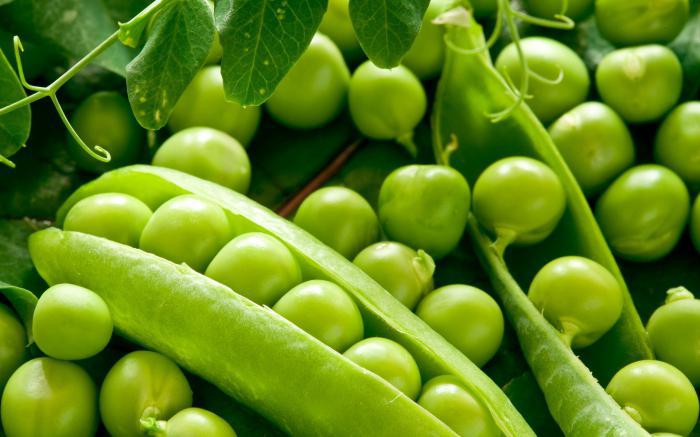

9:14199 9:9 9:71
Peas, like other legumes, have the highest concentration of B vitamins. A similar group of vitamins is not found in any of the vegetables or in any fruits. Having tasted green peas from your garden at least once, you will never want to eat frozen.
9:581
All parts of a green plant store a large amount of protein (almost as much of it contains beef), as well as a lot of starch and fat, which are easily absorbed by the body. But the most amazing thing is that the green pea is a real multivitamin treasure. Peas include a whole range of all kinds of vitamins, including folic acid, useful for heart patients and hypertensive patients, nicotinic acid, which helps with fatigue and insomnia. It contains numerous trace elements (iron, potassium, calcium, magnesium, as well as a rare antioxidant - the antioxidant selenium, which prevents the development of serious diseases, including cancer)
9:1756 9:9
At the same time, dishes made from ripe (dry) peas are “difficult food. To neutralize substances that inhibit the digestion process, it must be soaked for 15-20 hours before cooking, changing the water 2-3 times. Then, when cooking (at least an hour), after 30 minutes, the broth must be drained and filled with new water to cook. I must say that peas cook longer in hard water, while soft water allows them to cook much faster. Just remember that pea dishes are salted at the very end - salt also slows down the cooking process. Many housewives add baking soda to soaking water - swelling in such water, it will cook much faster.
9:1209 9:1219
Eating ripe dry peas should be limited (or excluded) for people with stomach, pancreas, gout, coronary heart disease, etc.
9:1542
Green unripe peas (including canned ones) can be used as an anti-sclerotic and diuretic. For stones in the bladder, it is recommended to eat fresh (unripe) seeds, drink a decoction of flowers and fruits: 30-40 g of raw materials per 0.5 liters of boiling water, boil for 10 minutes on low heat, leave for 30 minutes, drink 2-3 tablespoons 3-4 times a day for a month with kidney stones, until the stones begin to dissolve and leave the body.
9:841 9:851
It turns out that peas can preserve, prolong youth and beauty. He helped the Russian Empress Catherine II get rid of her bad skin. What she did not do - she powdered the problem areas of the skin with flour, but the ugly spots did not diminish. The court doctor suggested that she try a Roman mask - a pea mask with sour cream. It was recommended to cook this mask in a wooden dish, and it was necessary to grind it to an elastic consistency with a wooden mortar. After a few months, the empress's skin turned white and smooth.
9:1866 9:9
Modern cosmetologists offer the following recipe for a pea mask. It's very simple. For the mask, you need 100 grams of dry green peas, which should be exactly green, not overripe. We cook these peas for 2 hours. After that, drain the water, chop the remaining peas - you can use a drum grater, or, like a queen, in a wooden bowl with a wooden mortar - add milk whey to this gruel. The prepared mixture can be applied to the face. Leave the mixture on the face until it dries completely (10-15 minutes). Then the mask can be removed with warm water. You can see for yourself how miraculous it is.
9:1158 9:1168
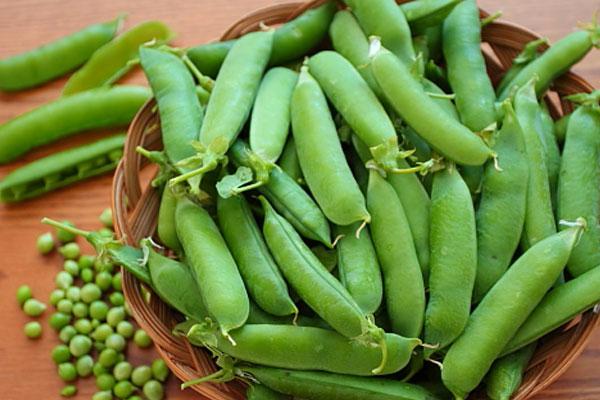

10:1673 10:9 10:85
All plants, including peas, are susceptible to the danger of being affected by fungal diseases or any pests. As they say, forewarned means forearmed. The danger must be known by sight.
10:456
The most important pest is leafworm larvae, they can quickly gnaw greens, and also damage the pods. For prevention, you can treat the beds with peas with infusion of tobacco, burdock root, celandine, tomato tops or garlic.
10:904 10:914
Of the diseases of a fungal nature, powdery mildew is the most dangerous. If you do not want to use various chemicals, then you can use folk methods, they are also natural. Infusion of sow thistle, aged for 8-10 hours, helps from powdery mildew. Spraying is carried out twice with an interval of one week.
10:1572 10:9
So we found out when plant peas in open ground in Siberia, the Urals or in the Moscow region. The timing is extremely approximate, and you need to individually focus on the weather in each region. Peas are an unpretentious culture, but very useful both for a person and for your site. On the site of its cultivation next year, it will be possible to plant any other crop, which will undoubtedly affect its growth.
10:777 10:787 10:841
Polka dots growing without support
For tall varieties of peas, support is required. For medium-sized and low plants, the support can be omitted, but the procedure significantly increases the yield. This allows light and air to penetrate without obstruction to all parts of the plant.
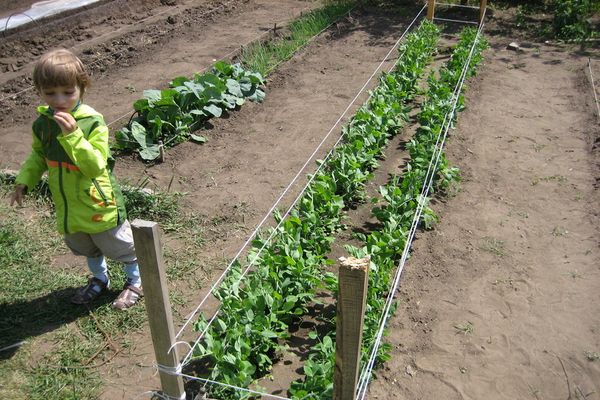

Plants, the stems of which do not exceed 70 cm, belong to the undersized group. During their cultivation, tying to a support is not required. Bushes, clinging to each other, do not fall to the ground. Peas that do not require support are in great demand among ordinary gardeners. The variety Tsarevich, Varis, Vera, Ambrosia, Grandma's surprise, Little Miracle can be selected.
Alpha
The Alpha pea variety is distinguished by its stable, high yield and early ripening. The fruits begin to ripen after 52 days.Plant height 55 cm, the stem is strong, so no props are required. Some gardeners do install supports, which has a positive effect on the amount of the crop. The pod is 8 cm long; up to 9 beans of dark green color are formed in it. The seeds contain a lot of protein and vitamin C.


The variety is resistant to frost, diseases, especially ascochitosis and fusarium. During the maintenance, it is necessary to set the irrigation mode, the addition of fertilizers is optional if they were applied during the pre-sowing period.
Avola peas
The Avola variety belongs to the shelling, early-maturing pea varieties. From the moment the first shoots appear to fruiting, 55 days pass. It is possible to get a high and high-quality harvest under any climatic conditions. Shows high resistance to diseases, especially fusarium. The dark green peas in the pod form large, most of them are 8 mm in size.
The height of the plant is small, reaching 50 cm, therefore it is grown without support. Care consists in loosening and watering the soil, especially during flowering and pouring fruits.
Pest and disease control
In case of non-observance of agricultural technology and unfavorable weather conditions, peas are often exposed to various diseases. The most dangerous of them are:
- Fusarium root rot - an incurable disease caused by fusarium fungi. It is manifested by yellowing of the lower leaves, the appearance of brown spots on the lower part of the stem. Over time, the taproot dies off and the plant dries out. After harvesting peas, be sure to destroy all plant debris to prevent the spread of disease.
- Rust Is the most common legume disease in all climatic zones. Bushes are affected during the budding period and the beginning of flowering. The leaves are covered with brown powdery pustules, which turn almost black by the end of summer. The affected leaves die off, the growth of the bush slows down. You can fight the fungus by spraying the bush with 1% Bordeaux liquid at least 20 days before harvesting.
- Powdery mildew - a fungal disease that affects the leaves, stems and beans of peas. The affected part of the plant is covered with grayish-white spots, which acquire a brown color over time. The bush suffers from a lack of nutrition, growth stops, the quality of the fruit decreases. To stop the disease, spray the bushes with 1% colloidal sulfur.
- Ascochitosis - a dangerous disease that can lead to the death of the entire planting of peas on the site. Young shoots die immediately, adult plants are inhibited in growth, lose a significant part of the leaves and stems. The disease can be recognized by the presence of dry spots with brown dots along the border. If you find a problem, immediately spray the plantings with 0.4% copper oxychloride.


Fusarium root rot
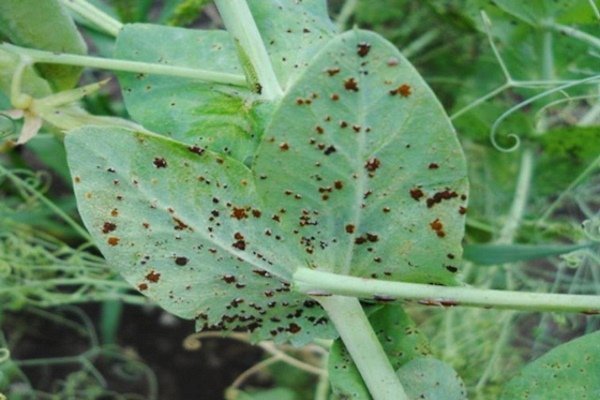

Rust on peas
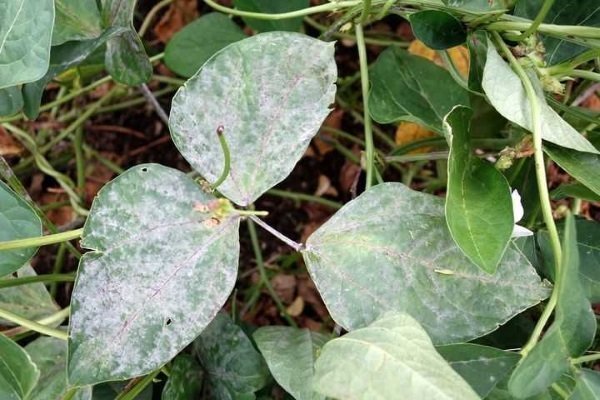

Powdery mildew on peas
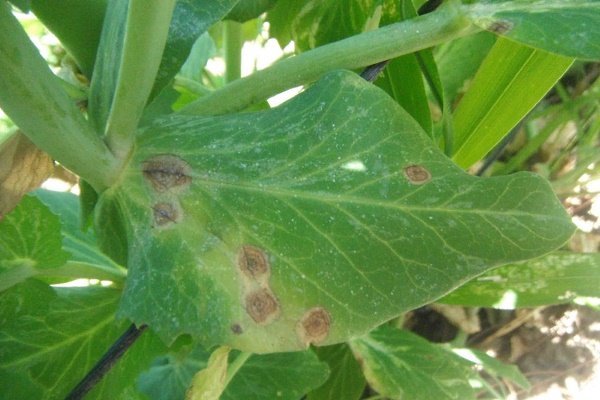

Pea ascochitis
Often peas also suffer from pest attacks. The main enemies of culture are pea moth and scoop... The first one lays eggs on young leaves during flowering. The hatched caterpillars invade the beans and eat the seeds.
The pea scoop prefers to lay its eggs on the underside of the leaves. After hatching, young green caterpillars eat up the green mass on the bushes. It is recommended to deal with these pests with the help of an infusion of wormwood. To prepare it, pour 200 g of chopped grass with 10 liters of water and boil for 45 minutes. Treat pea leaves with infusion during egg laying 1-2 times a week.
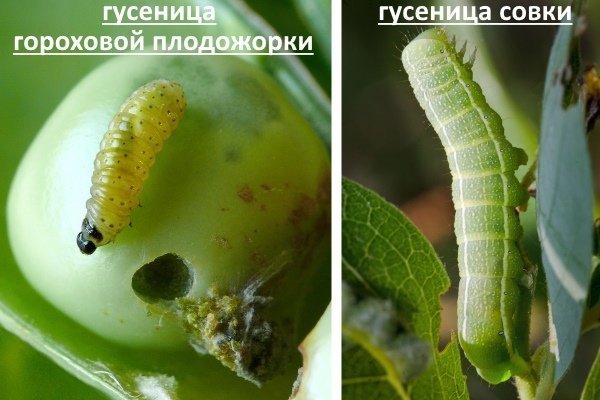

Ultra early peas
The earliest varieties of peas are the juiciest and sweetest. In addition, they are suitable for growing in regions with harsh climates. In addition to Ambrosia, Slider, Prelado and Vera, you can consider the following varieties:
| Name | Description |
| Pioneer | A very early sugar type, reaching technical maturity in 42-45 days under favorable conditions.The pods are long and pointed, densely filled with grains, ripen together. |
| Innovesa | A low-hulled type of pea, ripening in about 45 days under ideal conditions. Gives a wonderful harvest. The peas are regular, juicy and sweet. |
| Alpha | A good sugar variety, its fruits can be removed after 45-50 days. Cold-resistant, easily tolerates light frosts. Can be sown several times per season. |
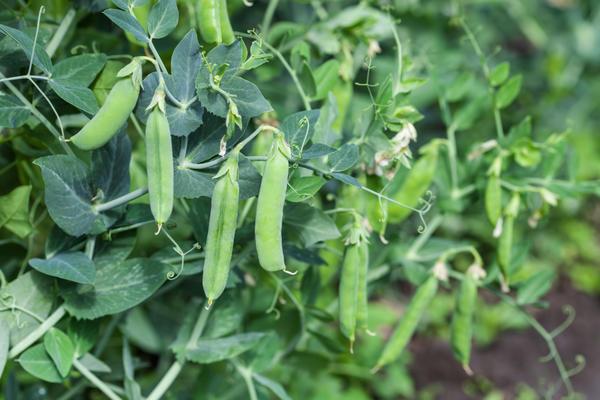

The earliest varieties of peas are very juicy and sweet!
Shell peas
It is versatile. It can be eaten straight from the garden or canned. If a product is grown for sale and it has not been sold as “green”, don’t worry - sell it later as yellow. It might even be next year. We pass directly to the consideration of varieties.
- Atlant is one of the favorites of most gardeners, especially if you plan to harvest it for the winter. Not all pea varieties can boast of such a fast ripening period - only 55 days. The beans are large and crack easily when ripe. Pest resistance is almost 100%.
- Abador - well suited for small areas, a great option if you want to plant a small bed, exclusively for fresh food. The stem is very low and twisting, does not require serious support, but also does not give a large yield.
- Adagum peas - the height of the bush is 85-90 cm, the beans are large, which is especially pronounced with balanced fertilization. Increased resistance to powdery mildew.
- The farmhouse is ideally balanced in taste characteristics, suitable for preservation and is great fresh. Resistant to most diseases and pests. Mid-season, yields a series of 70 days.
- Pharaoh - is often planted on an industrial scale. It is tasty in green form, and also successfully dried and stored after ripening. The only one of all is resistant to fungal diseases.


Preparing the site
After what crops will peas feel comfortable? These are cabbage, beets, potatoes. We do not plant after other legumes, as well as ourselves.
In the autumn, choosing a spot for peas, we dig well the soil to a depth of 25-30 cm. Add compost or humus (5-6 kg) per m2 plus 25-40 g of superphosphate with 20 g of potassium salt. With the arrival of spring, digging up again.
If your plot is with poor soil, in need of fertilizer, then use a teaspoon of urea, superphosphate, potassium sulfate per m2, or simply add compost or humus 2-3 kg mixed with a teaspoon of nitrophosphate.
We forget about fresh manure, it is not our helper. Adding it will give an impetus to the lush development of greenery instead of fruits.
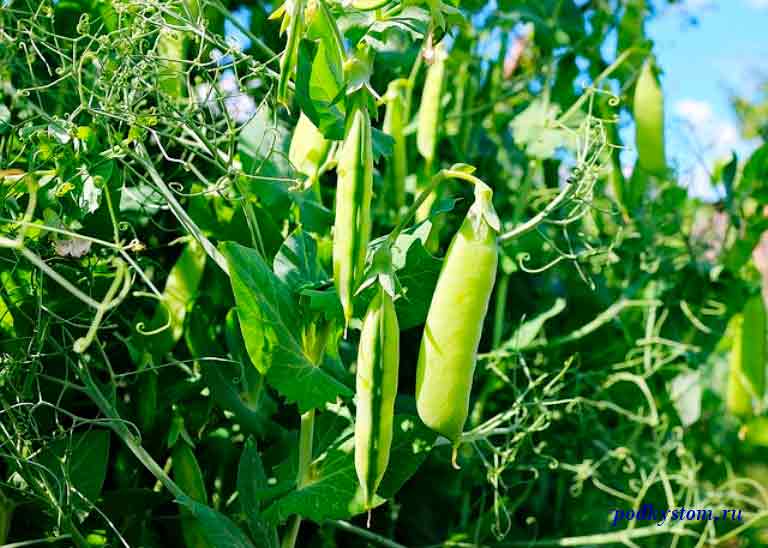

The size of the landing site is adjustable by ourselves.
Choosing peas
Today there are three types of peas:
- sugar;
- cerebral;
- peeling.
But that's not all, there are dozens of varieties of each species. Some are good fresh, others should be harvested when fully ripe, split into halves and added to soups and mashed potatoes. But young shell peas are not much different from sugar or cereal peas, which are eaten fresh. Therefore, gardeners often decide to kill two birds with one stone: eat tender green beans in the first two weeks of ripening, and collect everything else and put it in storage. Let's take a look at the most popular pea varieties so you know exactly what to look for in the store.
Garden pests
Tilling the soil for peas involves the obligatory digging. This is necessary in order to remove all the larvae and pests that are hiding in the depths. The most common pea pests are the pea moth, weevil, and acacia moth. It is very important to take measures to protect the plants, since it will be very offensive to collect beans, each of which contains several worms. So, the main measure of protection against the moth is the early sowing of plants.The caryopsis spreads along with the seed; to prevent its spread in the garden, the seeds must be kept in a salt solution and the floating plants must be removed. But against the moth, deep plowing of the site and treatment with insecticides work great. Pea leaves are indicative for the diagnosis of fungal and bacterial infections. If they begin to curl and dry out, then urgent action is needed.


Suitable varieties for Siberia
Peas are an unpretentious crop that grows well even in Siberia.
In western Siberia, the climate is mild. Summer temperatures can reach 35 degrees. Here you can grow the following varieties of legumes: Altai emerald, Sugar pod, Henry, Miracle of Kelvidon.
The best pea varieties for the Urals: Alpha, Berkut, Vega, Children's Sugar, Sprinter, Voronezh Green.
Altai emerald
The Altai emerald pea variety is considered tasty. The harvest is rich and of high quality, begins to ripen after 54 days. The stem is 48 cm long, the pods are slightly curved, 9 cm long. The peas are large and sweet, they contain a lot of protein and sugar.
Like all legumes, the cultivar cannot tolerate fresh organic fertilizers. Prefers sandy and loamy soils. During cultivation, it requires abundant watering, especially during flowering and ripening of the beans.
Ambrosia
Vegetable sugar type of pea variety Ambrosia is an early ripening plant. From the moment the first shoots appear until fruiting, 50 days pass. The height of the stem reaches 70 cm. The yield of the variety is high. To collect the largest possible harvest, it is advisable to install a support.
The plant is unpretentious, basic care is required in the early stages of development of a vegetable crop. Each pod contains up to 8 peas, which have a high taste.
